-
Germany to new Iris-T air defense systems to Ukraine, rules out Taurus missiles
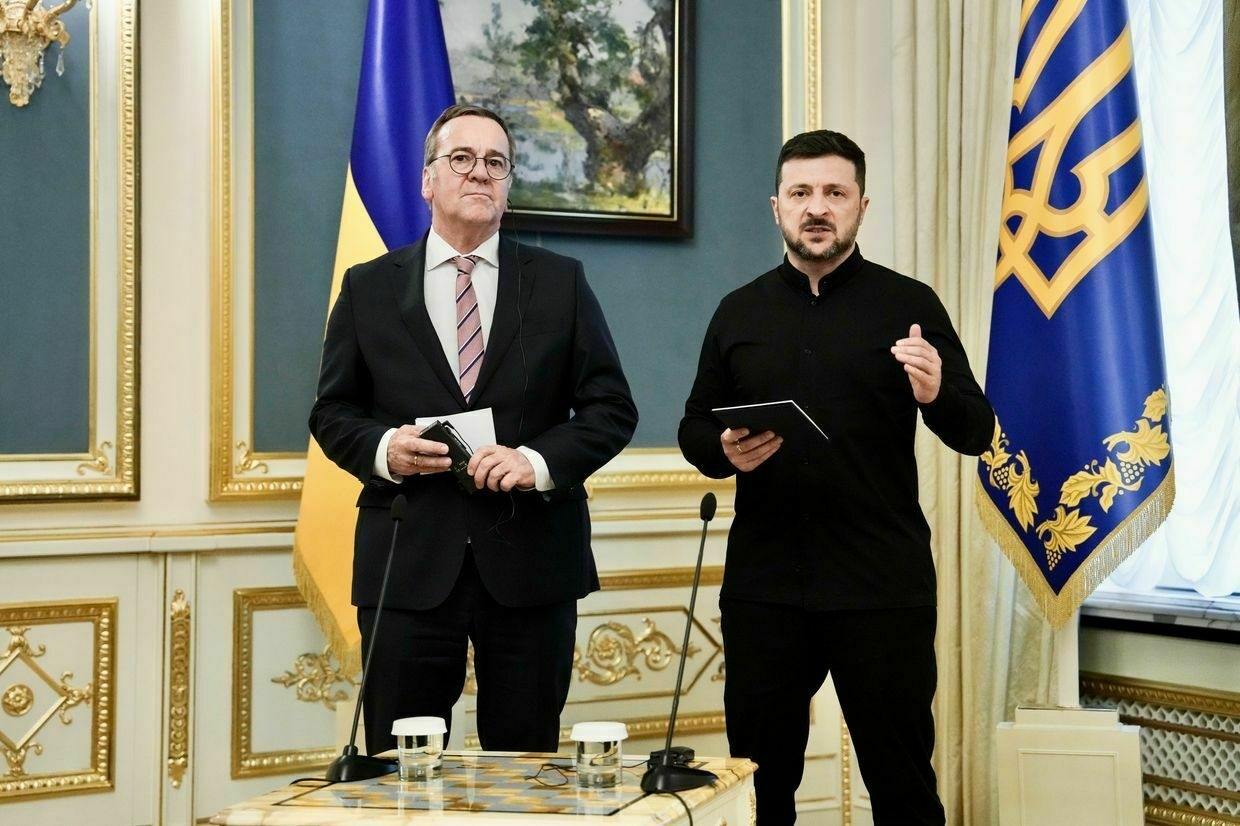
Germany will deliver new IRIS-T air defense systems to Ukraine under a three-year supply plan, President Volodymyr Zelensky said during a joint press conference with German Defense Minister Boris Pistorius, who added Berlin has no plans to provide Taurus long-range missiles.
The announcement comes amid escalating Russian aerial assaults, including a June 10 missile and drone strike on Kyiv, one of the largest since the start of the full-scale invasion.
“We are grateful for the supply of IRIS-T air defense systems,” Zelensky said on June 12. “We understand that deliveries are currently being planned… for the next three years. This is very important assistance."
The IRIS-T is a German-made medium-range surface-to-air missile system capable of intercepting drones, aircraft, and cruise missiles.
Pistorius confirmed the delivery timeline but firmly ruled out the possibility of sending Taurus missiles — weapons Kyiv has repeatedly requested to strike deep into Russian territory.
“You asked me whether we are considering this, and my answer is no,” Pistorius said.
Before taking office, German Chancellor Friedrich Merz signaled openness to lifting former Chancellor Olaf Scholz’s ban on the missiles. That stance has not yet resulted in a policy shift.
Ukraine has already received long-range missiles — including ATACMS from the U.S. and Storm Shadow and SCALP from the U.K. and France. Initially restricted to use within Ukrainian territory, Western allies only began easing those limitations in late 2024.
Germany is Ukraine’s largest military donor in Europe. Zelensky said that Berlin will provide 7 billion euros ($8.1 billion) in aid this year, with investments in defense production being considered.
“Today, we discussed that this aid will continue,” he said. “We agreed on additional investments in production… both in Ukraine and in Germany."
Zelensky visited Berlin on May 28 for talks with Merz, part of an ongoing effort to bolster Ukraine’s defense industry amid uncertainty over U.S. support under President Donald Trump.
Why can’t the West match Russia’s ammunition production?The West is failing to catch up to Russia’s production of the most basic unit of war for the past half-millennium — gunpowder. The modern propellants and explosives that power war have largely been offshored. While Western manufacturers are churning out shell casings, they are short on the materials to fillThe Kyiv IndependentKollen Post
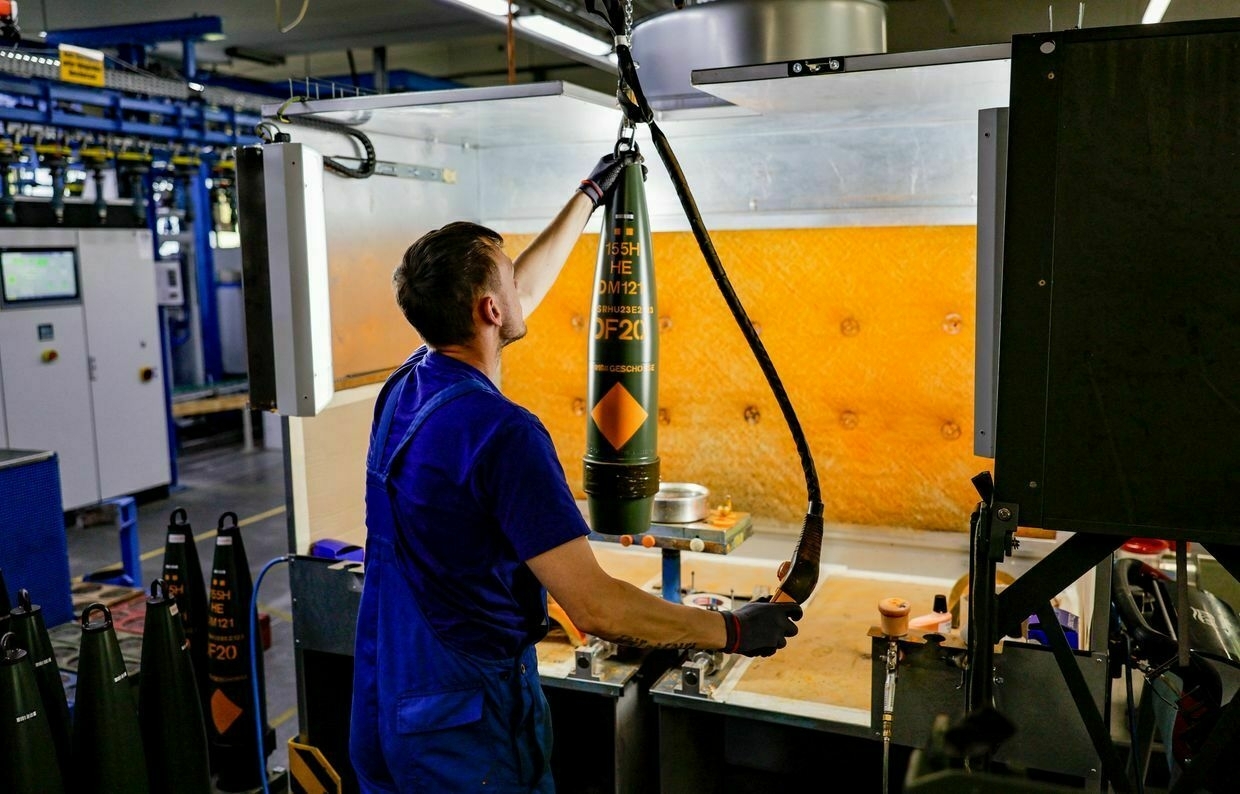
-
‘I feel like I lost 3 years’ — Ukrainian author turned soldier Artem Chapeye on culture during war
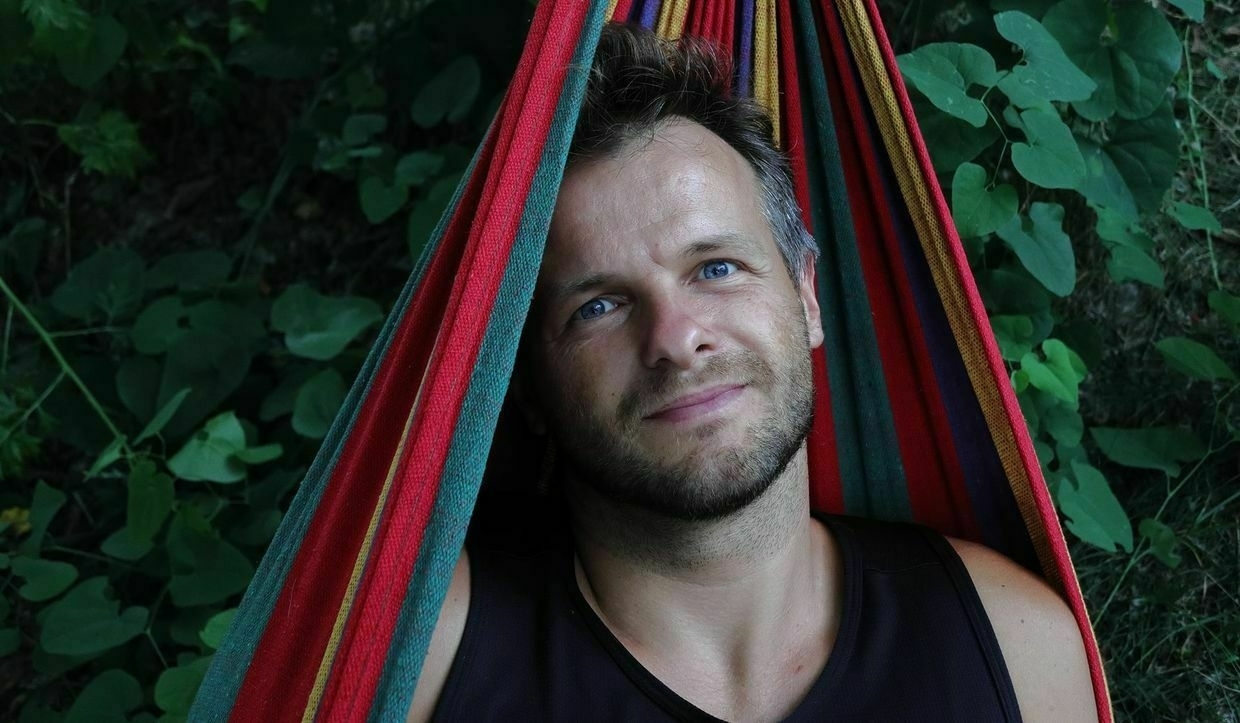
Since Russia launched its full-scale invasion of Ukraine in 2022, Ukrainian writers have found themselves grappling with questions not just of survival, but of voice, purpose, and audience.
Can one write fiction in the midst of war? Can creativity endure under air raid sirens and military mobilization? And what does it mean to speak to the world — especially when much of that world is only willing to listen to Ukrainians when the subject is war?
Artem Chapeye, a Ukrainian writer turned soldier, is among those navigating these questions firsthand. Known for his sharp nonfiction and fiction rooted in realism, Chapeye’s literary journey has shifted dramatically in recent years — from an early inability to read anything at all in 2022 to rediscovering language through science fiction and a growing urgency to write again.
In this conversation with the Kyiv Independent during the international Book Arsenal Festival, Ukraine’s largest literary event, Chapeye reflects on the creative cost of war, his fears that the world will only associate Ukraine with war, and the surprising role artificial intelligence might play in leveling the literary playing field for authors working in “small” languages.
This interview has been edited for length and clarity.
The Kyiv Independent: Military service can be both physically and mentally exhausting — do you still find time to read or write for pleasure?
Artem Chapeye: I’d say that during the first year, in 2022, I couldn’t even bring myself to read. So I focused on more mechanical mental activities — like learning languages on Duolingo. I ended up learning two. It was a way to keep my mind occupied and avoid getting caught up in ruminations. Eventually, I started reading again, but I don’t think I began writing until the end of 2024. So yes, I do feel — and still feel — that I lost about three years. Now there’s this strong sense of urgency to get back to writing, to pick up where I left off.
The Kyiv Independent: What do you feel compelled to write about? There’s been a lot of discussion in Ukrainian literary circles — many fiction writers are finding it difficult to write fiction right now and are turning to nonfiction or poetry instead. Understandably, the war has become the central theme.
Artem Chapeye: Sometimes I worry we won’t be able to write anything unrelated to the war — or at least, that anything not about the war won’t interest the world. It feels like a niche we’ve been forced into. In my case, I began with very short nonfiction pieces — reflections and contemplations on what was happening around me.
This resulted in my latest book, called “Ordinary People Don’t Carry Machine Guns” in English. It’s also been published in French and, of course, in Ukrainian.
People are often focused on their own stories and don’t always want to be shown how they look from someone else’s perspective.
Now I’m trying to return to fiction, but the hardest part has been finding the right voice — the right tone. I realized that writing in a realistic style no longer feels possible for me. My previous book, “The Ukraine,” was what I called pure, photographic realism. But with this material, that approach doesn’t work.
When I started reading again in 2023, after a year in the army, I turned to fantasy and science fiction — genres with very different voices. I read “The Lord of the Rings,” and a lot of Philip K. Dick. Eventually, I came to understand that I already knew what I wanted to write — I had just been searching for the right voice for three years.
Now, I think it’s finally coming together. I hope to finish my first fiction book (since the start of the full-scale war) by the end of 2025. But it will have to be short, because there’s still that ever-present sense of urgency — that feeling that at any moment, everything could be interrupted.
The Kyiv Independent: When it comes to writing about the war, do you find it challenging to describe that experience? In some sense, the war affects everyone in Ukraine, but not everyone has firsthand experience of being targeted almost daily in a front-line city or sitting in a trench. Foreigners are even more removed from our wartime reality. Did you struggle with any kind of cognitive dissonance because of that while writing?
Artem Chapeye: I think it’s important to portray different aspects of war. It matters to understand the war from the perspective of a refugee, or a woman with children, for example. I’m fully aware that my own experience is limited.
After three years, you realize that your perspective is confined to the work you've been doing. I’ve never been in the trenches myself — my role has focused on working with prisoners of war. That, too, is a unique experience, and it deserves to be explored.
The real challenge is turning your limited, personal experience — and the experiences of those around you — into something universal. Something that resonates not only with Ukrainians, but with a global audience. That’s what I’m trying to do.

Ukrainian writer and soldier Artem Chapeye attends the 13th International Book Arsenal Festival in Kyiv, Ukraine, on May 30, 2025. (Nastya Telikova / Global Images Ukraine via Getty Images) In fact, the new book I’m working on won’t mention Ukraine or Russia even once. For Ukrainians, it will be obvious what it’s about — but my goal is to create something universal, beyond national borders. Because I worry, as I mentioned earlier, that we’re being boxed into a single narrative.
I’ve already seen this dynamic at work: when I write about the war in Ukraine, American media is interested. But when I once tried to comment on what (U.S. President Donald) Trump means to us — how he's perceived from the outside — no one paid attention. I get it. People are often focused on their own stories and don’t always want to be shown how they look from someone else’s perspective.
The Kyiv Independent: Is there a particular type of literature or style of writing from Ukrainian authors that you’d love to see foreign publishers focus on? For example, later today during the Book Arsenal Festival, we’ll be speaking with Irena Karpa — her work is not directly related to the war. It’s vibrant, playful, and explores the experience of womanhood in Ukraine. That should be especially interesting for international audiences who often discuss feminism, as her approach is quite different from what they’re used to.
Artem Chapeye: Honestly, I’ve stopped believing strictly in genres altogether. I was really happy when Kazuo Ishiguro won the Nobel Prize — I loved his work long before that, and I’ve always been a fan of science fiction. I grew up with it.
It doesn’t really matter what the genre is — what truly matters is the quality of the work itself.
Now, science fiction can be recognized as serious literature, which I think is fantastic. The same goes for literature coming out of Ukraine. It can be science fiction, or vibrant and playful like Irena Karpa’s writing, or something melancholic, or even dark comedy.
It doesn’t really matter what the genre is — what truly matters is the quality of the work itself.
The Kyiv Independent: There are so many opportunities to publish both classic and contemporary Ukrainian literature. What do you think it will take for international readers to become more interested in Ukrainian literature that isn’t focused solely on the war?
Artem Chapeye: The main problem is that there are not enough translators. More are emerging, yes — but it’s still hard to tell who is truly skilled. When I tried reaching out to one translator, she told me she was fully booked for the next two or three years. So clearly, the pool is very limited. And Ukrainian isn’t an easy language to master.
This points to a bigger issue: most of what we call “world literature” still comes from former imperial languages. The British Empire left behind a global English-speaking legacy. That’s why a novel like “Half of a Yellow Sun” (by Chimamanda Ngozi Adichie) — which tells the story of the Igbo struggle in Nigeria — is written in English and widely read.
The same goes for Russian literature. It’s well known partly because there have been so many translators working on it for a very long time. But this challenge isn’t unique to Ukraine. It affects any writer working in a language that isn’t one of the four or five dominant global languages.
Author Yuri Andrukhovych on Ukrainian dissident art in Soviet timesIn Soviet times, being a pro-Ukrainian artist was dangerous. The Soviet secret police were particularly brutal in Ukraine, given that it was a country with a long history of resistance to Russian rule. Still, new generations of artists remained committed to their culture in the face of widespread Russification. AmongThe Kyiv IndependentKate Tsurkan
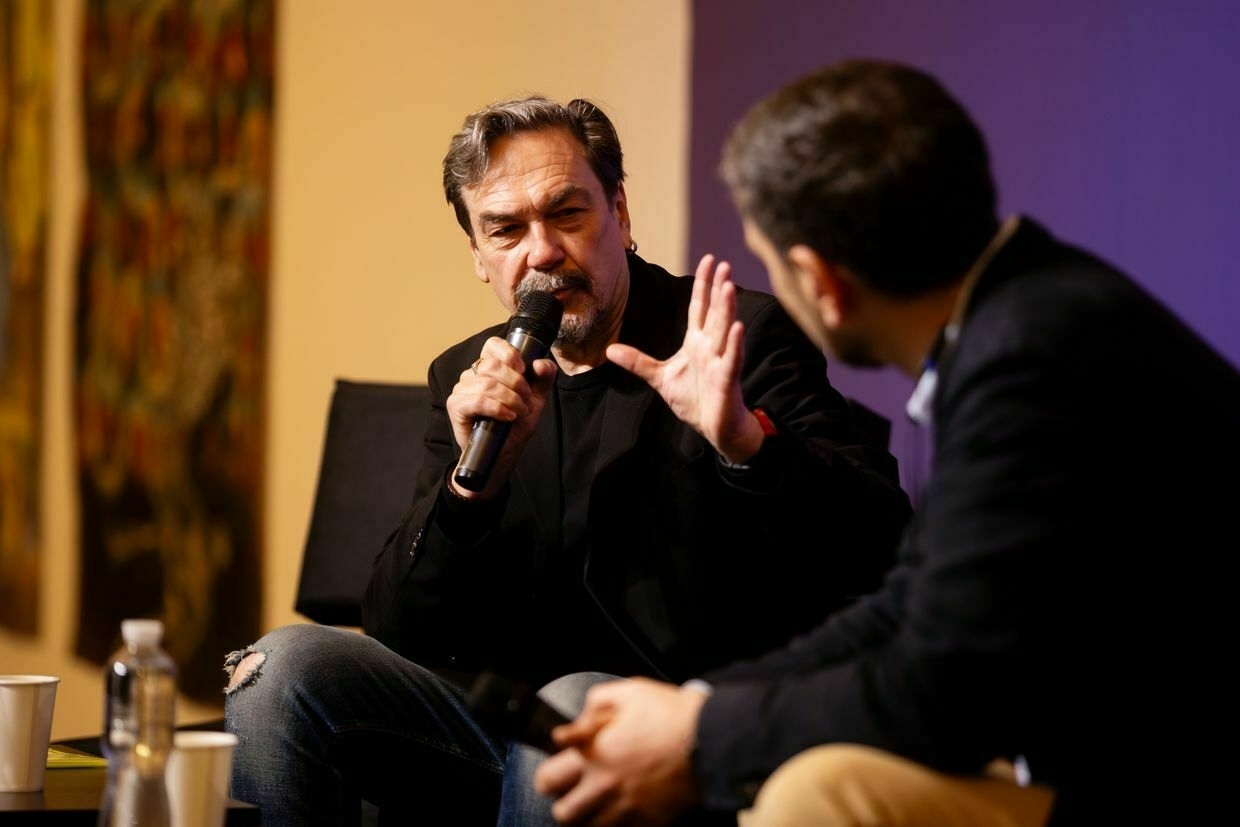
So yes, the lack of translators is a major barrier. I was recently talking to the philosopher Volodymyr Yermolenko, and we both had the same thought: maybe, just maybe, artificial intelligence could become a kind of equalizer for writers from countries like Ukraine, Poland, the Czech Republic — or even from places like Bangladesh or Papua.
If AI can speed up the process of translation — allowing human translators to focus more on refining rather than starting from scratch — it might actually level the playing field. Because right now, if you go to a place like France, yes, they do publish translated literature — but 90% of it is translated from English.
The Kyiv Independent: But do you really think that AI can capture the subtleties of the Ukrainian language, especially the humor?
Artem Chapeye: No, not at the moment. But then again, many human translators can’t either. I wrote a novel I really love called “Strange People” that’s written in a mix of Ukrainian and Russian — a dialect known as “Surzhyk.” It would be difficult to translate, to say the least.
Think about it this way: when Faulkner writes in a Southern dialect, it still gets translated. That’s possible because many people — myself included — can read Faulkner in the original and understand those nuances. But there are very few people who can truly grasp the subtleties of Ukrainian in its original form.
Now, if AI could at least handle the bulk of the translation — the structure, the plot — that might reduce the human translator’s workload to just two or three months, instead of years.
Right now, that’s still (in the realm of) science fiction. It’s not possible yet. But I believe that maybe, just maybe, in another generation, the language of a book, a movie, or even a video game might not matter so much anymore.
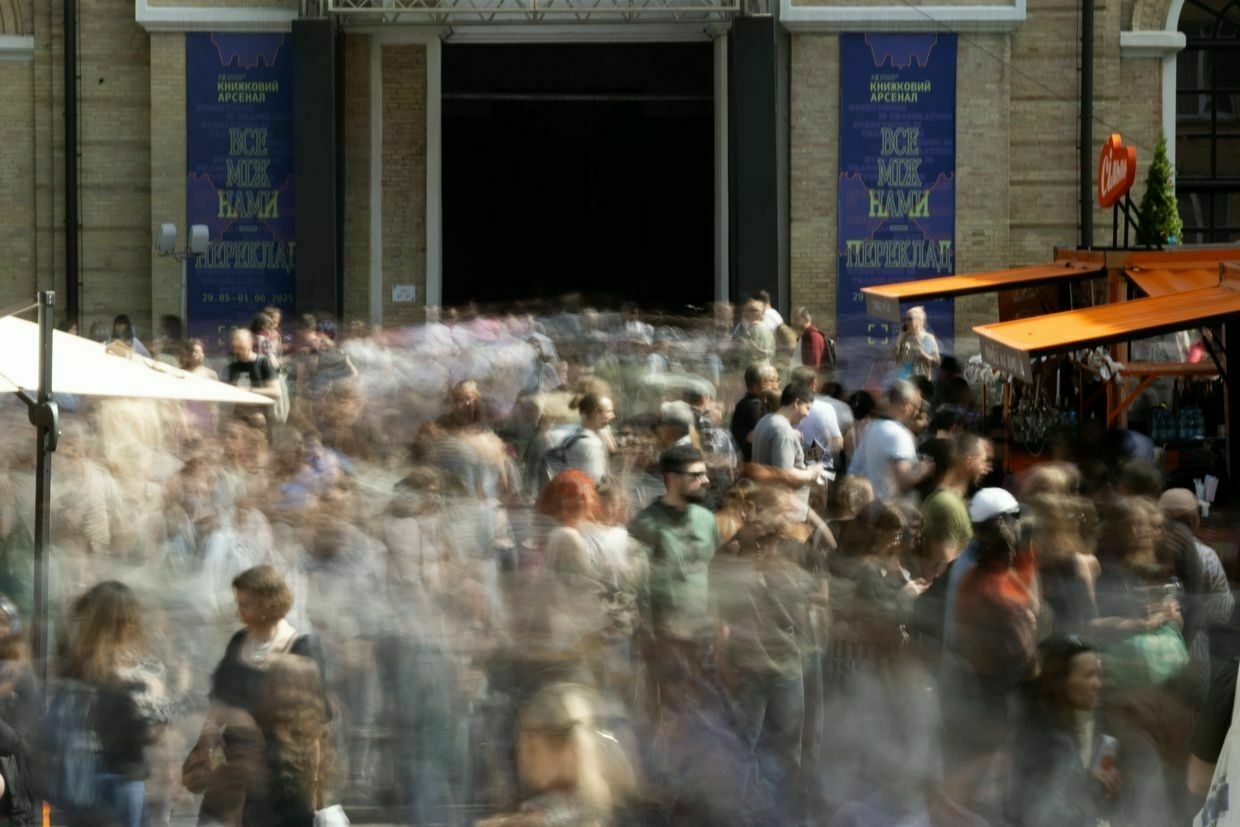
People attend the 13th International Book Arsenal Festival in Kyiv, Ukraine, on May 31, 2025. (Yevhenii Zavhorodnii / Global Images Ukraine via Getty Images) The Kyiv Independent: It’s really interesting to hear your perspective, especially since many creative people tend to be quite dismissive and pessimistic about AI.
Artem Chapeye: Actually, for legal reasons, I joined the Society of Authors in the U.K., and they’ve had some intense debates about AI. There was even a push to get everyone to sign a petition to ban AI outright. But I kept wondering — how can you really do that?
I was always on the mailing list, quietly hoping to offer a different perspective. Because I truly believe that, one day, it won’t matter whether you’re writing in Ukrainian or English. What should matter is the story itself — its relevance to humanity as a whole.
Right now, I often feel I know more about life in Milwaukee than in, say, (Ukraine’s) Khmelnytskyi Oblast — even though I live in Ukraine. I can envision a city like St. Jude because I’ve read (Johnathan) Franzen. I can picture life in the American Midwest, but I couldn’t say the same for a village in Ukraine — unless I actually go there myself.
Note from the author:
Hey there, it's Kate Tsurkan, thanks for reading my latest article. It was a great pleasure for me to reunite and speak with Artem Chapeye, one of those Ukrainian writers I've known for years. One of the few bright moments in the dark days of the start of the full-scale war was congratulating him on being the first Ukrainian author to get published in the print edition of the New Yorker. If you haven't heard of him before this interview, I hope it made you interested in learning about more of his work. If you like reading this sort of material, please consider supporting us by becoming a paid member of the Kyiv Independent today.
-
I am unbreakable! First emotions of a Ukrainian soldier after the exchange #shorts
-
Russia reportedly redeploys bombers to Far East bases after Ukraine's Operation Spiderweb
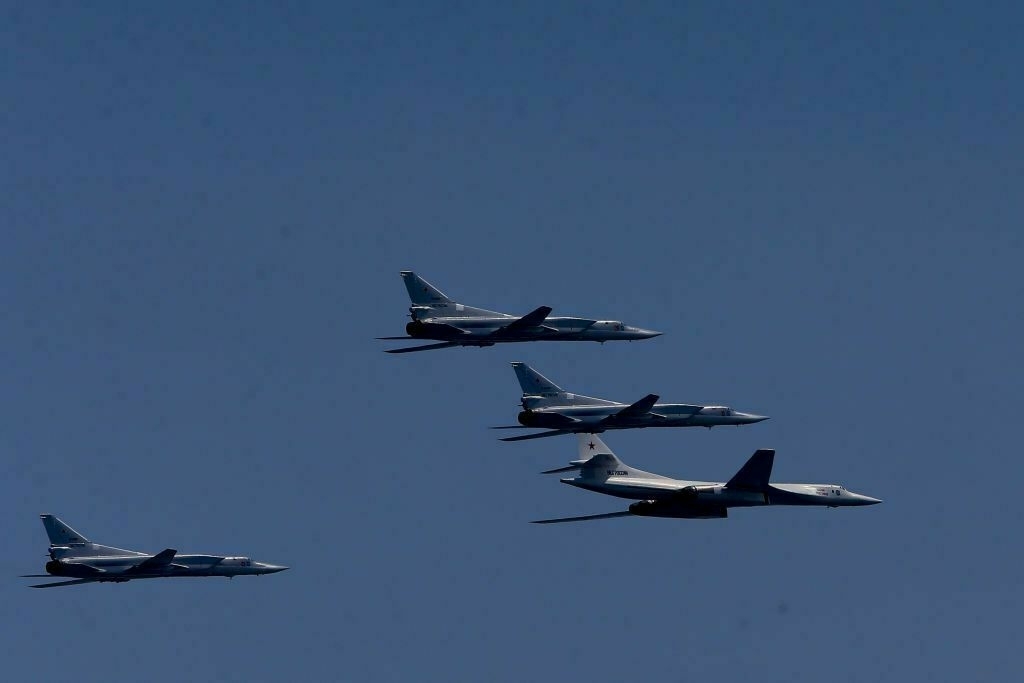
Russia has redeployed dozens of long-range bombers to more remote bases within the country, Russian independent media outlet Agentstvo reported on June 11, citing OSINT analyst AviVector.
The relocation comes in the wake of Ukraine’s Operation Spiderweb, the unprecedented mass drone strike on June 1 that targeted four Russian air bases deep inside the country.
The Security Service of Ukraine (SBU) said 117 drones were launched from hidden positions across Russia, damaging 41 aircraft, including Tu-95, Tu-22M3, and Tu-160 bombers.
According to Agentstvo, all Tu-160 bombers have been evacuated from Belaya airfield in Irkutsk Oblast and Olenya airfield in Murmansk Oblast. Some were relocated to Anadyr in Chukotka, Yelizovo in Kamchatka, and Borisoglebskoye in Tatarstan.
Tu-22M3 and Tu-95MS bombers were also redeployed. Eleven Tu-22M3s and all Tu-95MS aircraft near Murmansk reportedly relocated to the Ukrainka airfield in Amur Oblast, Engels-2 in Saratov Oblast, Borisoglebskoye in Tatarstan, and Mozdok in North Ossetia.
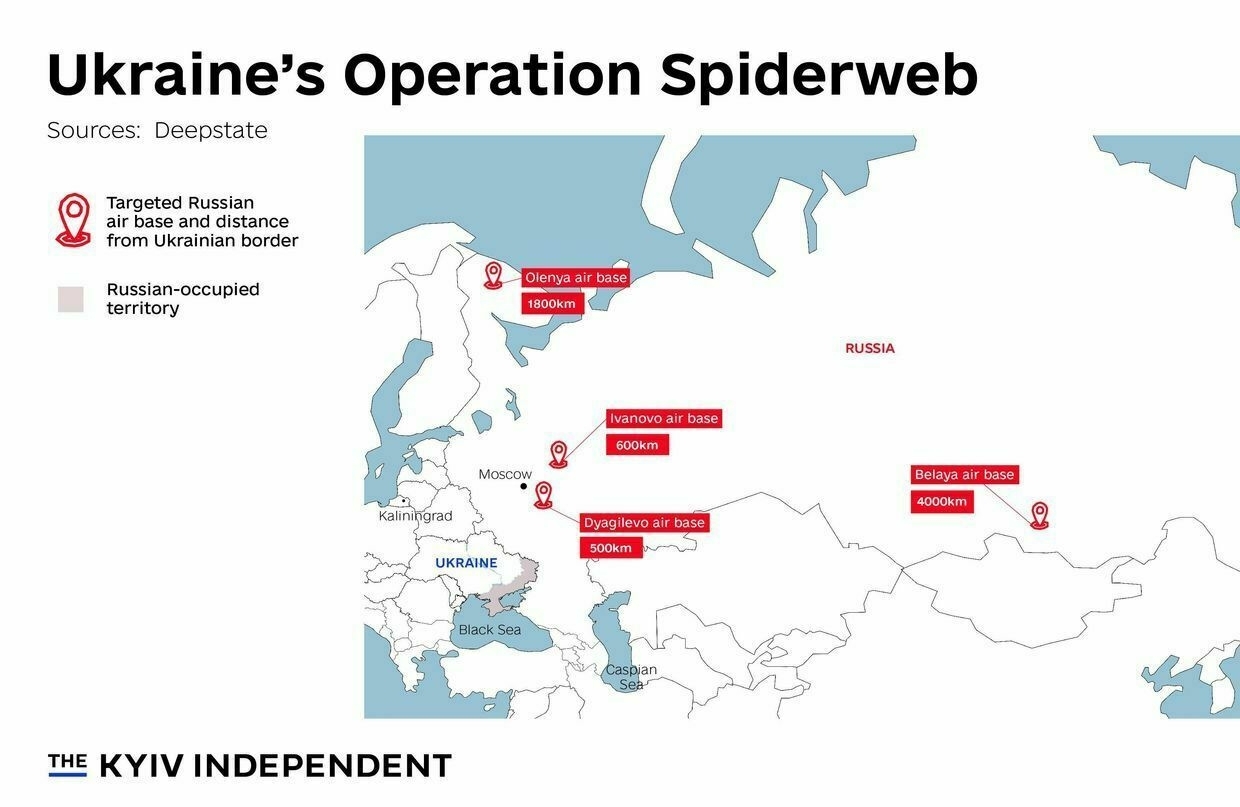
Ukraine’s Operation Spiderweb. (Nizar al-Rifai/The Kyiv Independent)) The reported relocation of bombers is the latest sign that Ukraine’s drone warfare is forcing the Kremlin to rethink its strategic posture, even far from the front lines.
Western analysts and military officials praised Ukraine’s ingenuity in the Spiderweb operation. NATO Admiral Pierre Vandier called the mission a modern reinvention of the “Trojan Horse,” demonstrating Ukraine’s growing technical sophistication and deep-strike capability.
President Volodymyr Zelensky claimed that roughly half of the targeted aircraft are damaged beyond repair. Russia has acknowledged losses but insisted all damaged aircraft will be restored.
-
Why can't the West match Russia's ammunition production?
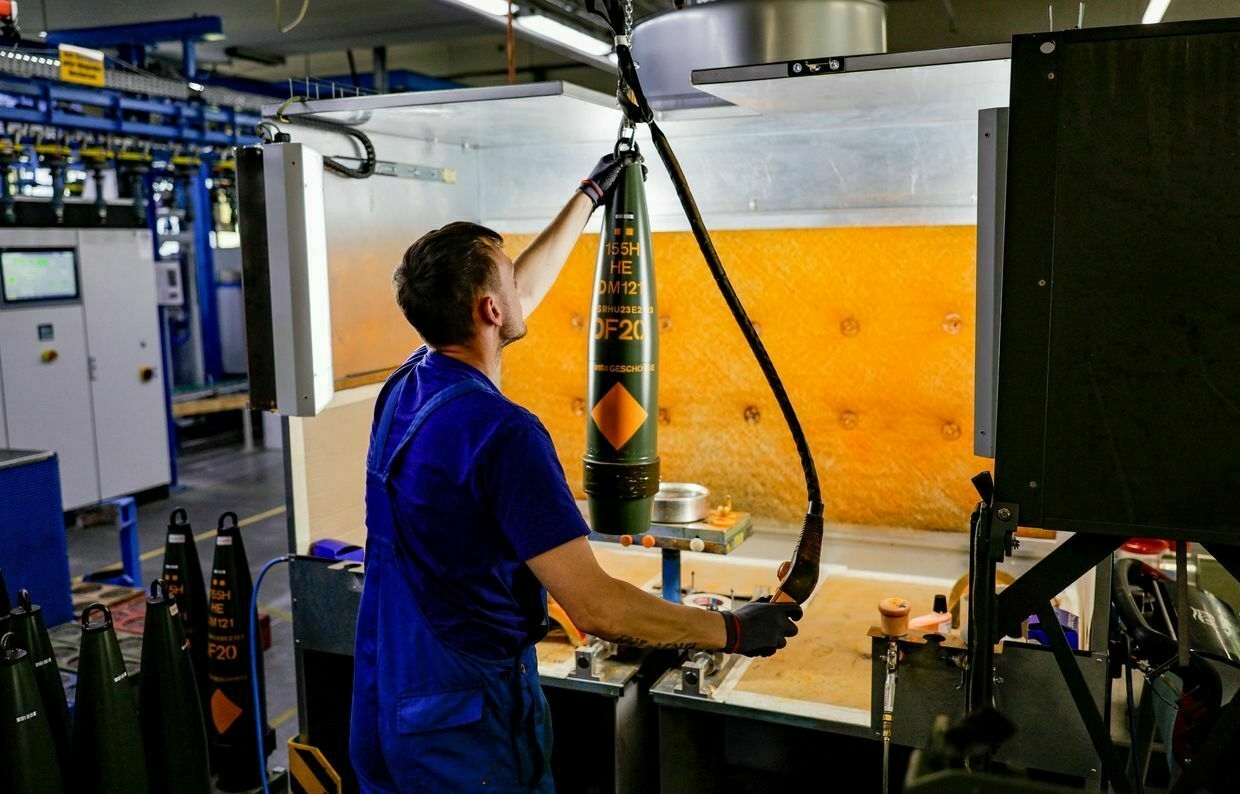
The West is failing to catch up to Russia’s production of the most basic unit of war for the past half-millennium — gunpowder.
The modern propellants and explosives that power war have largely been offshored. While Western manufacturers are churning out shell casings, they are short on the materials to fill them with. A dearth of ammunition from NATO allies has long hampered Ukraine, but is more recently alarming the Western alliance.
“Putin’s war machine is speeding up, not slowing down,” NATO Secretary General Mark Rutte said at a June 9 speech in London. “In terms of ammunition, Russia produces in three months what NATO produces in a whole year."
“Russia could be ready to use military force against NATO within five years. Let’s not kid ourselves: We are all on the Eastern flank now,” Rutte continued.
It is no secret that Ukraine has relied on the West for ammunition since Russia’s full-scale invasion. NATO’s militaries have been sounding the alarm as to dwindling artillery reserves since at least late 2022. But they have been far slower in ramping up production than Russia.
Jammed between unequal arsenals, Ukraine has long felt the pinch.
With stocks running low, NATO’s armories are finally confronting the harsh reality that they have outsourced core defense manufacturing functions to hostile nations.
In part, that disparity is because Russia has converted to a wartime economy and can act more decisively. But it is also because Russia never had the environmental controls that the U.S. and EU have. The production of the raw chemicals that power guns, bombs, rockets, and artillery is a filthy business, literally.
“Gunpowder and propellants represent a bottleneck in the manufacturing process compared to the relatively straightforward production of shells.”
Onshoring explosives into NATO territory will require either highly innovative chemistry or significant rollbacks of environmental regulations.
As Russian losses in Ukraine hit 1 million, Putin faces an economic time bombRussian losses in Ukraine hit a massive, and grim milestone on June 12 — 1 million Russian soldiers killed or wounded during the 39-month-long full-scale war, according to figures from Kyiv. Although hugely symbolic, the number is unlikely to prompt a change in tactics from Moscow as it gears up forThe Kyiv IndependentChris York
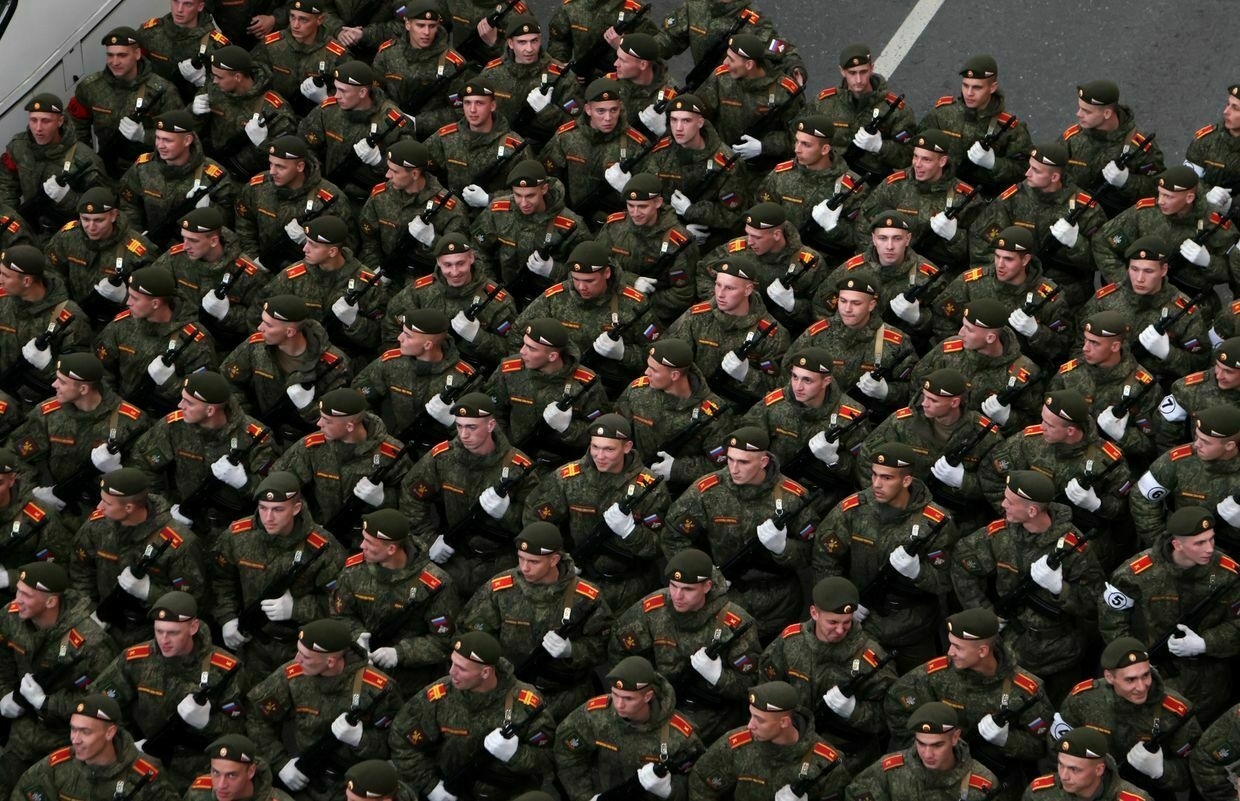
European reloading"Since Russia's invasion of Ukraine, we have seen unparalleled demand for our specialist energetic materials," James McFarland, a representative for ChemRing, one of the largest explosives makers in Europe, wrote to the Kyiv Independent. "Our Norwegian business, in particular, has been running at full capacity, and its order book extends for a number of years."
ChemRing's Norwegian business, ChemRing Nobel, descends from Alfred Nobel, who managed to stabilize nitroglycerin in the form of dynamite in the mid-1800s, making enough money to fund prizes in everything from chemistry to, ironically, peace in perpetuity.
While there are many arms manufacturers left in Europe, the few plants left producing basic chemical explosives in Europe are, like ChemRing, the definition of legacy. Most shut down towards the end of the 20th century.
"It is a fact that gunpowder and propellants represent a bottleneck in the manufacturing process compared to the relatively straightforward production of shells," Andrej Cirtek, a spokesperson for the Czechoslovak Group, or CSG, told the Kyiv Independent.
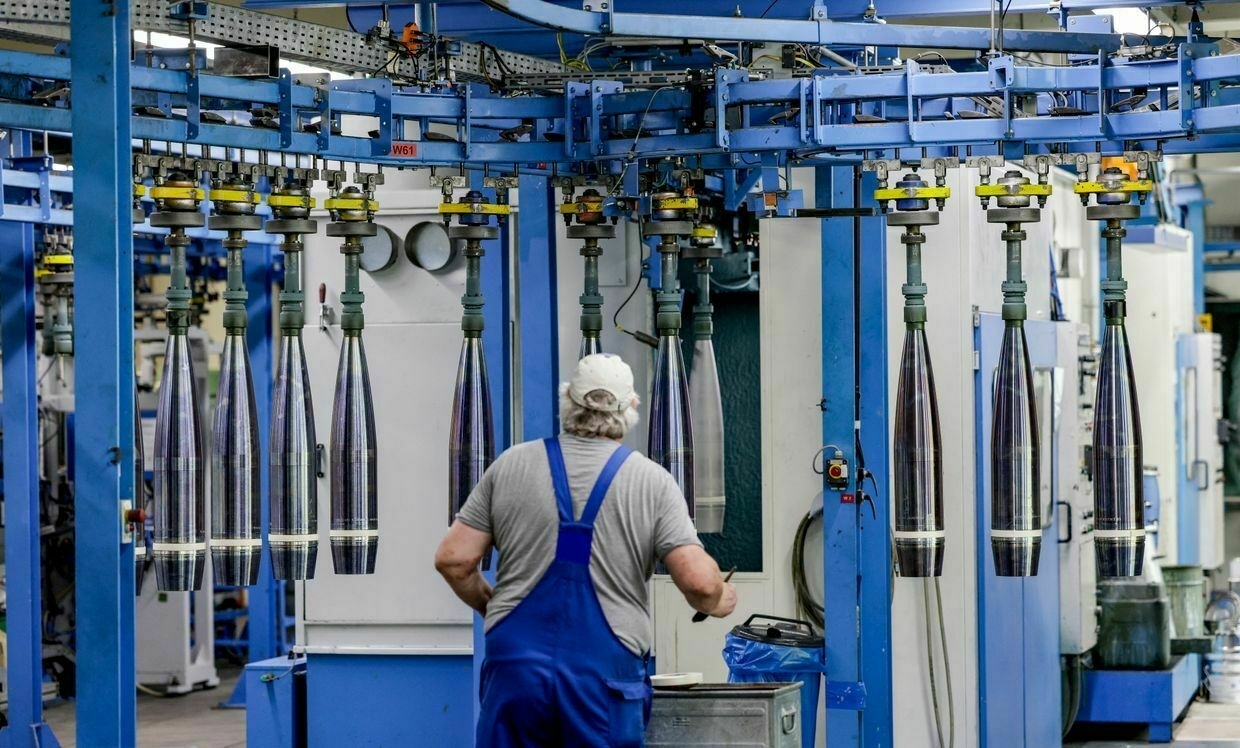
A technician works on 155mm shells for the Panzerhaubitze 2000 howitzer at Rheinmetall’s facility in Unterluss, Germany, on June 6, 2023. (Axel Heimken / AFP via Getty Images) CSG is one of the many European ammunition makers that have announced the creation of new facilities to produce ammunition. They are, Cirtek explained, aiming for total vertical integration of a wide range of substances that go boom. But they are only doing so in existing industrial zones — especially flipping civilian chemical plants to military use.
"In Europe, starting production of explosive components from scratch is practically infeasible due to lengthy regulatory processes and limited availability of necessary technologies. For this reason, CSG focuses on restoring and expanding production at sites with a historical manufacturing legacy," Cirtek told the Kyiv Independent.
Basic ballisticsThe most relevant "excitants" for military production are broken down into propellants and explosives. Gunpowder is a propellant. TNT is an explosive.
As an example, a typical 155 mm artillery shell features a chamber filled with an explosive, often TNT or hexogen, usually called RDX. A modern mortarist loads a usually explosive-packed shell and then "bags" of propellant, whose weight and composition are determined by required range.
The divide between propellants and explosives is not black and white, says John Gray, a former U.S. Army ordnance disposal specialist who now trains U.S. servicemen how to make improvised explosives.
One especially flexible chemical compound called nitrocellulose is behind the bulk of Russia's firepower. Its shortage is likewise at the heart of the West's misfiring supply chain.
"Nitrocellulose is a monomolecular explosive — that's where we chemically attach the fuel and the oxidizer together," Gray explained to the Kyiv Independent. "It's used in everything as far as ammunition is concerned."
Cellulose is just plant matter, usually derived from cotton linten or wood pulp. When treated with nitric acid, cellulose gains an oxidant. Very crudely, it's chemically like puffing air onto a fire.
While not a complicated process, nitrocellulose production leaves as waste enormous amounts of nitric as well as sulphuric acid — byproducts common across the production of TNT, RDX, and HMX that take decades to clean up.
Boom by numbersThe numbers are fairly stark. Recent research from the Jamestown Foundation shows a doubling in Russian gunpowder production between 2022 and 2024, as well as a steady supply of necessary cotton from Central Asia.
Western nations have let production of basic explosive materials — for example, nitrocellulose and TNT — slip overseas, specifically to China, which is also the largest cotton producer in the world. China, meanwhile, remains a key supplier of both nitrocellulose and its precursors, especially cotton linton, to Russia.
A major Reuters investigation from last July found that nitrocellulose production was particularly hamstringing NATO's efforts to build artillery shells.
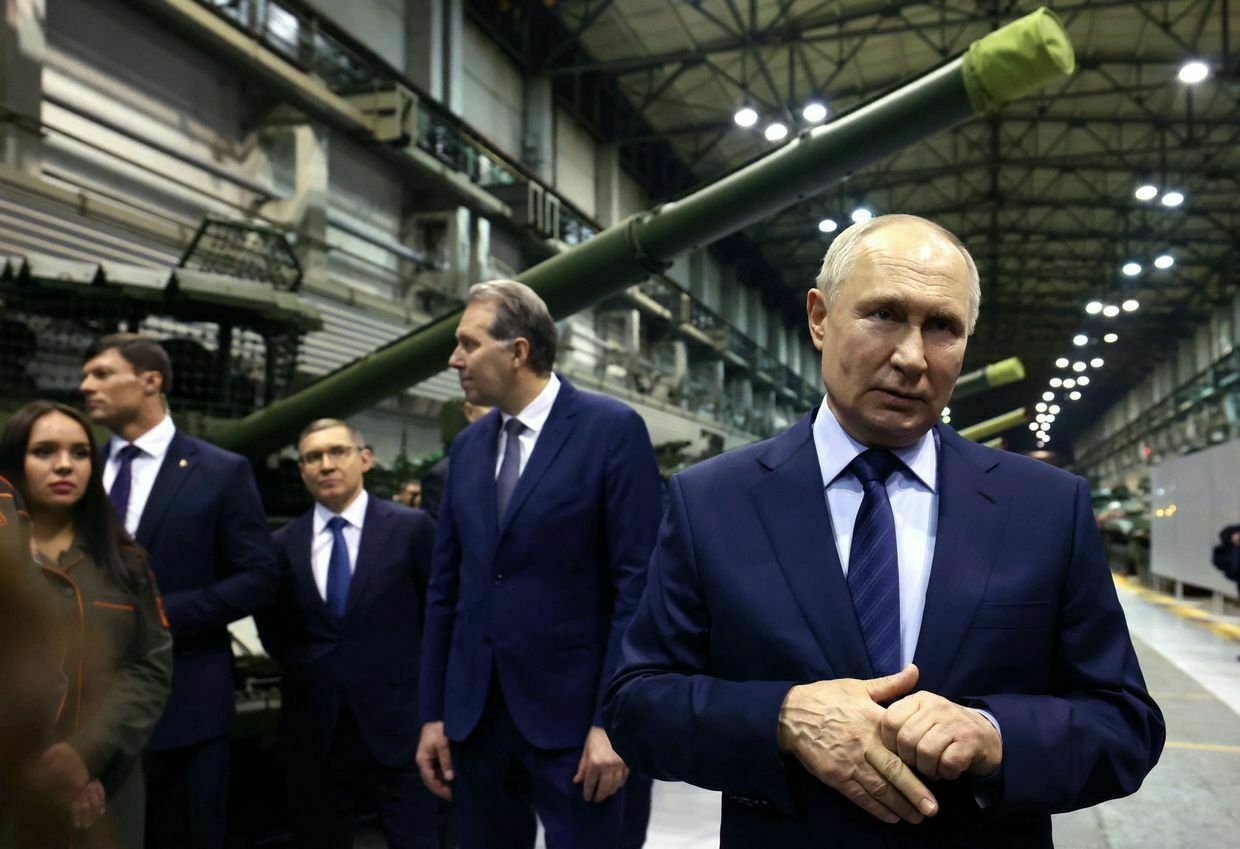
Russia’s President Vladimir Putin visits Uralvagonzavod, the country’s main tank factory, in Nizhny Tagil, Russia, on Feb. 15, 2024. (Alexander Kazakov / Pool / AFP via Getty Images) Ukraine, like much of the West, produces more shell casings than it can obtain blast materials to put in them. The largest remaining Ukrainian ammunition factory is in northern Sumy Oblast, within easy strike distance of gathering Russian forces. And one of the forgotten casualties of Russia's full-scale invasion was Zarya, Ukraine's only TNT factory, in now-occupied Luhansk Oblast.
As an executive at Florida artillery producer Global Ordnance lamented to The War Zone at the start of May, "the US hasn't made TNT in decades."
Today, the only TNT manufacturer physically located in NATO is Poland's Nitrochem. Low-nitrogen nitrocellulose is made at factories for functions like lacquer, but NATO-made military-grade nitrocellulose effectively all comes from a single factory in Redmond, Virginia.
There are multiple reasons. Raw materials or chemicals feature lower profit margins than end-stage weapons. They also leave massive environmental footprints, particularly of nitric and sulphuric acid, which are key to making everything from nitrocellulose to RDX.
Rheinmetall announced plans to build 155 mm artillery shells inside of Ukraine.
Explosives factories also have a tendency to blow up, as China's second-largest nitrocellulose factory did last May. A Northrop Grumman facility filled with rocket fuel in Utah suffered the same fate this past April.
For potential production within Ukraine, the concern is more that Russia will actively attack any large-scale manufacturing inside the country. New Ukrainian explosives producers have emerged but have had to remain relatively small scale.
"For FPVs, they need 5 million (munitions) a year. Today, between 300,000 and 400,000 are made here, of which 80% are done on hand machinery, and they're not made in factories, they're made in the field," one Ukrainian explosives maker who asked to remain anonymous out of security concerns explained to the Kyiv Independent.
Charges meant for drones have the advantage of not needing propellants, as the drones themselves provide propulsion.
"For ammunition for FPV drones, deep-strike UAVs, other specific mechanisms — for them, what you need most of all is plastic explosives," the Ukrainian explosives maker continued.
Ukraine has stepped up its ability to manipulate explosive chemicals like those needed for drones. But they remain dependent on Western imports of raw chemicals like RDX and PETN, which nobody will be making at scale within Ukraine until next year.
If Germany sends Taurus missiles to Ukraine, Russia has a major Crimean Bridge problemLatest: Germany pledges 5 billion euros in new aid to Ukraine, no Taurus missiles announced A statement from German Chancellor Friedrich Merz on May 26 about long-range strikes inside Russia resurrected a long-held hope in Ukraine — that Berlin is finally about to send Kyiv its Taurus missiles. “There are noThe Kyiv IndependentKollen Post
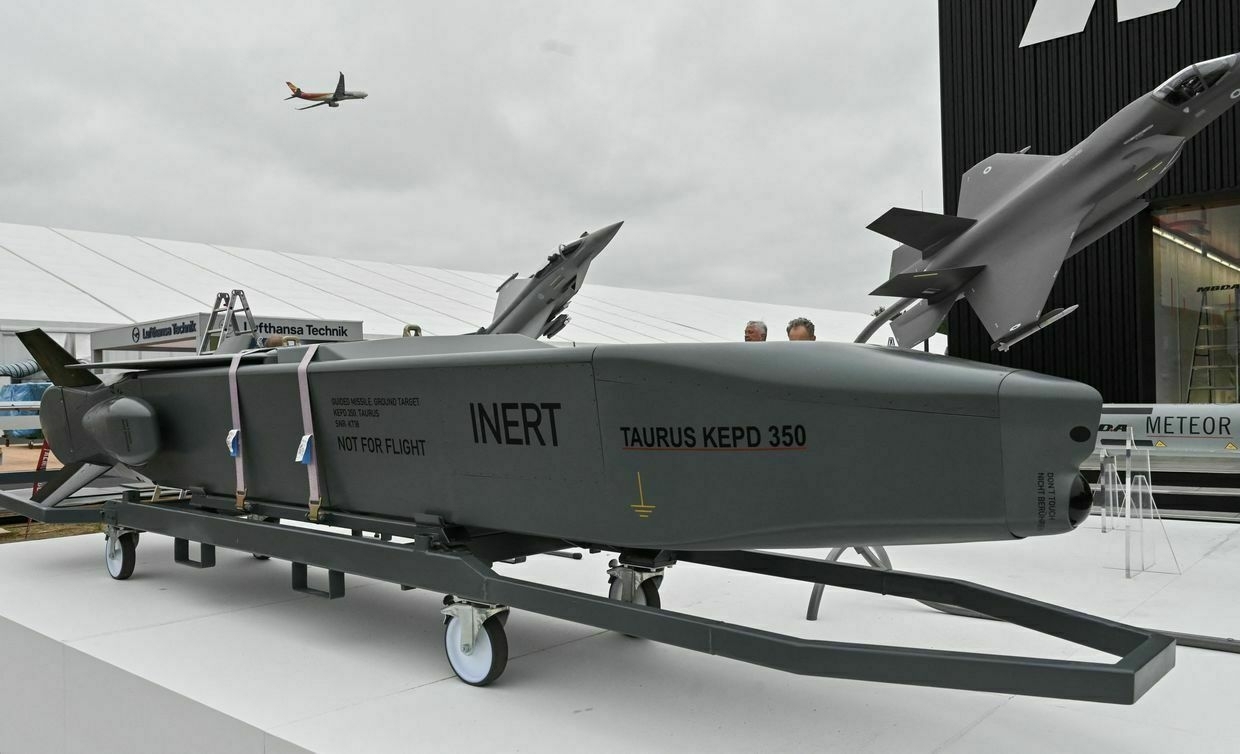
Production expansionsThe West has clearly recognized this is a problem for both Ukraine and NATO members. A flurry of government contracts and arms maker announcements have touted acquisitions and refurbishments on industrial centers everywhere from Virginia to Saxony.
Those few companies that have hung onto the explosives industries are seeing massive profits.
ChemRing is planning a 275% expansion of its site in Norway. A representative wrote to the Kyiv Independent that it had seen firms buying its goods sign on to contracts extending 12 to 15 years in the future.
Rheinmetall, Europe's biggest ammunition maker, recently bought a formerly civilian nitrocellulose plant that it plans to refurbish and bring online for military-grade production by 2027.
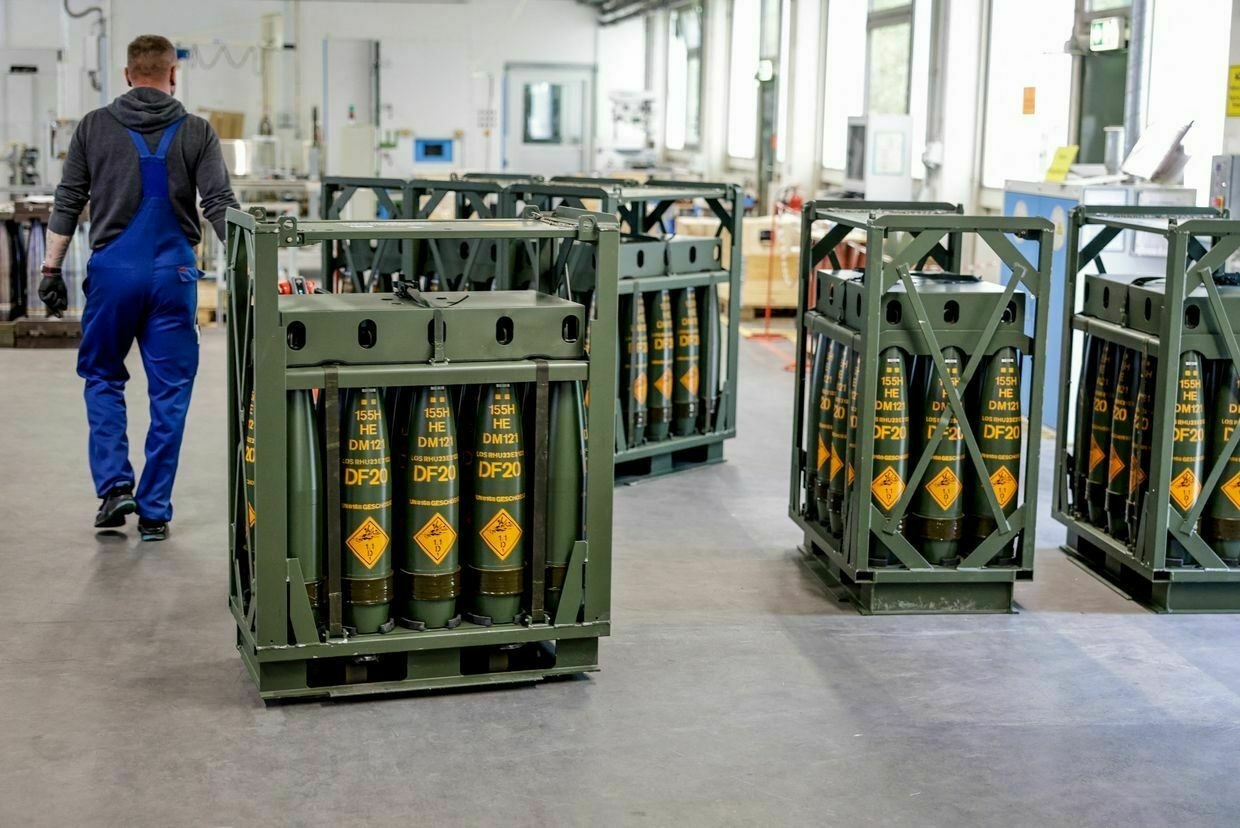
A technician of German arms maker Rheinmetall works on 155mm shells for Panzerhaubitze 2000 howitzers bound for Ukraine, at the company’s facility in Unterluss, northern Germany, on June 6, 2023. (Axel Heimken / AFP via Getty Images) Despite being formally a civilian plant, the recently purchased Hagedorn-NC factory was providing Russia with nitrocellulose via a Turkish intermediary up until at least early 2024, having found itself near bankruptcy earlier, a Wall Street Journal investigation found early in 2024.
Rheinmetall announced plans to build 155 mm artillery shells inside of Ukraine but has yet to begin production, with a representative telling the Kyiv Independent that "We expect to establish a joint venture with our Ukrainian partner shortly."
European ammo makers are generally pointing to 2027 as the start of new mass production.
"We are increasing our group-wide capacity for the production of propellant powder from 5,000 tonnes per year in 2022 to 12,000 tonnes per year in 2027," a spokesperson from Rheinmetall wrote to the Kyiv Independent.
For Ukrainians short on ammunition today, 2027 is eons away.
Exploring new chemical compoundsThe only military-grade nitrocellulose production still in the United States is at a Virginia factory owned today by a local affiliate of the British BAE Systems, which is similarly dominant in RDX, a key blast explosive and the main ingredient in C4, almost all of which comes from a BAE factory in Holson, Texas.
BAE's U.K. branch previously announced plans to expand artillery production by a factor of 16. For that, the firm is toying with a new model of production that they say "will use continuous flow processing to synthesize explosive material and remove the need for nitrocellulose and nitroglycerine, which are high in demand across global supply chains, in propellant production."
BAE did not specify what method they were using to go beyond nitrocellulose. Gray pointed to patents for nitrocellulose-free powder originally filed by Dynamit Nobel — today ChemRing Nobel — and using RDX contained in fillers to produce a propellant as the most likely alternative.
A potential pivot away from nitrocellulose-derived propellant may be the most chemically interesting result of today's shortage.
Key to Russia’s defeat lies in its economyAs the war in Ukraine grinds on, attention remains fixed on the battlefield. But Russia’s most vulnerable flank is not in the trenches — it’s in the treasury. The West, and especially the United States, holds economic levers that could push Vladimir Putin toward serious negotiations or even collapseThe Kyiv IndependentWojciech Jakóbik
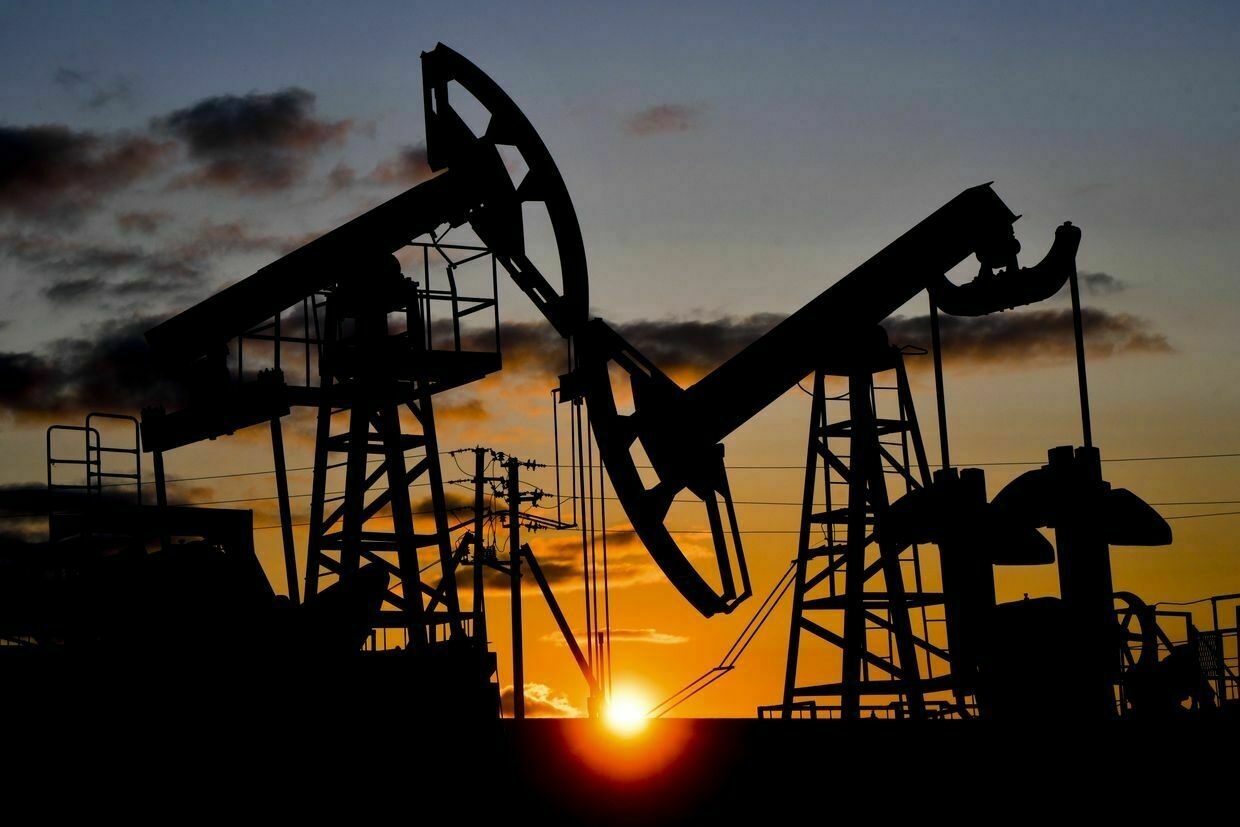
-
Over 100,000 Russian families seek missing soldiers through Ukrainian project, Kyiv says
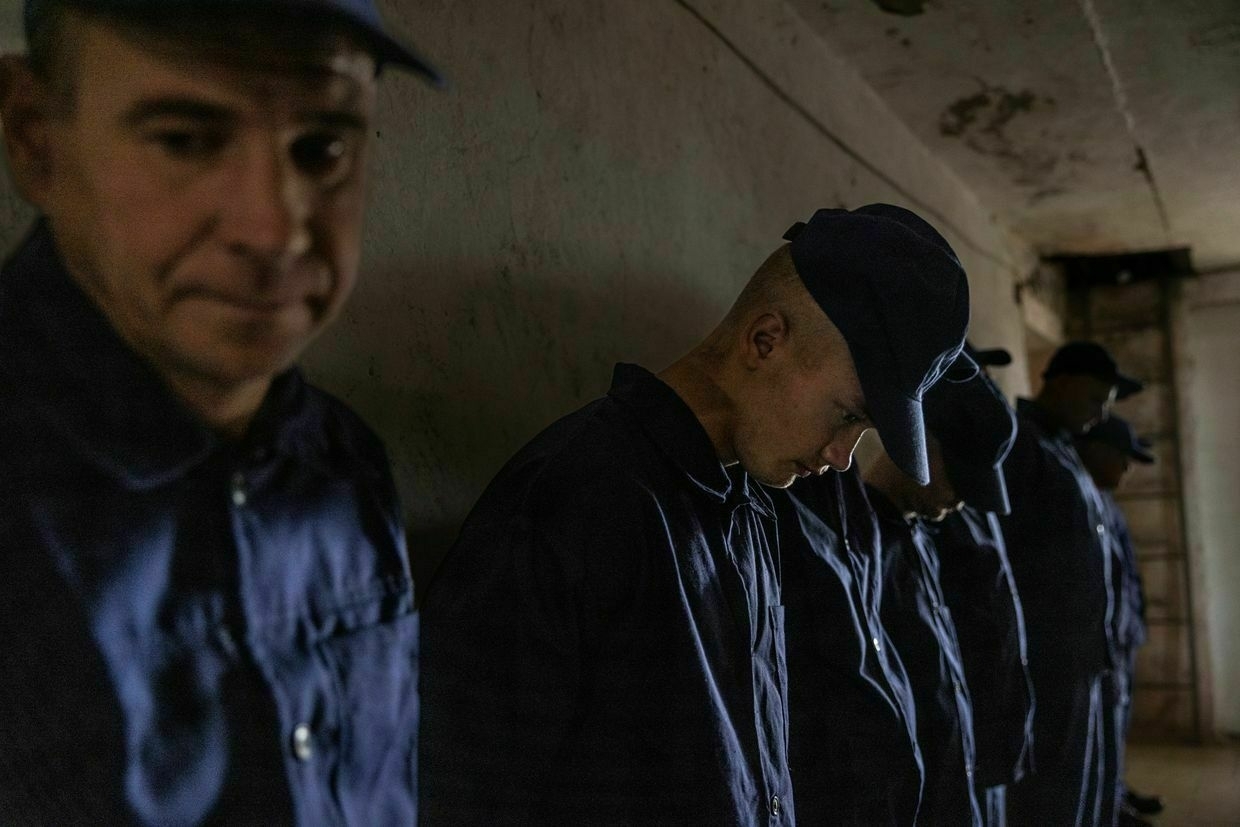
More than 100,000 Russian families have contacted a Ukrainian-run initiative in search of information about missing Russian soldiers, Ukraine’s Coordination Headquarters for the Treatment of the Prisoners of War (POWs) said on June 12.
The announcement comes as Russia and Ukraine are conducting a series of the most extensive prisoner exchanges since the beginning of the large-scale war in 2022. The latest phase of the exchange occurred on June 12.
The initiative, called “I Want to Find” (Russian: “Хочу найти”), has received 100,324 requests from Russian citizens seeking answers about relatives who vanished while serving in Russia’s military, the Coordination Headquarters said.
The actual number of missing Russian troops is believed to be significantly higher. Since launching its full-scale invasion of Ukraine in February 2022, the Kremlin has largely concealed the scale of its military losses, forcing many families to search independently, Ukrainian officials said.
In May 2025 alone, the project received a record 12,320 inquiries — the highest monthly figure since the program began in January 2024.
Through the project, families can verify whether their relatives have been captured or killed, which may enable them to pressure Russian authorities to pursue prisoner exchanges. As of June, Ukraine has confirmed 2,415 Russian soldiers held in captivity, with 1,126 of them already exchanged for Ukrainian defenders, the Coordination Headquarters said.
“Many more Russians remain in captivity, but not all families know about the program or have submitted requests,” the agency added.
A detailed analysis of the requests revealed that some of Russia’s most severely depleted units include the 15th Separate Motorized Rifle Brigade (Military Unit 90600), which accounts for 2,277 missing personnel — the highest of any single unit. Of the 20 most-affected units, 17 are motorized rifle brigades, often deployed in Russia’s most brutal infantry assaults, commonly referred to as “meat grinder” tactics.
The data also showed that 26% of missing soldiers were under the age of 30. The youngest reported missing was 18, and the oldest was 67.
The project has also uncovered a shift in public sentiment, claiming 75% of those submitting requests said they do not support Russia’s war in Ukraine.
According to the Ukrainian General Staff, Russia has lost over 1 million troops since the start of its invasion — a figure reported for the first time on June 12, with 1,140 casualties recorded in just one day. The total reported Russian losses stand at 1,000,340 as of that date.
The Kremlin has not commented on the figures.
As Russian losses in Ukraine hit 1 million, Putin faces an economic time bombRussian losses in Ukraine hit a massive, and grim milestone on June 12 — 1 million Russian soldiers killed or wounded during the 39-month-long full-scale war, according to figures from Kyiv. Although hugely symbolic, the number is unlikely to prompt a change in tactics from Moscow as it gears up forThe Kyiv IndependentChris York
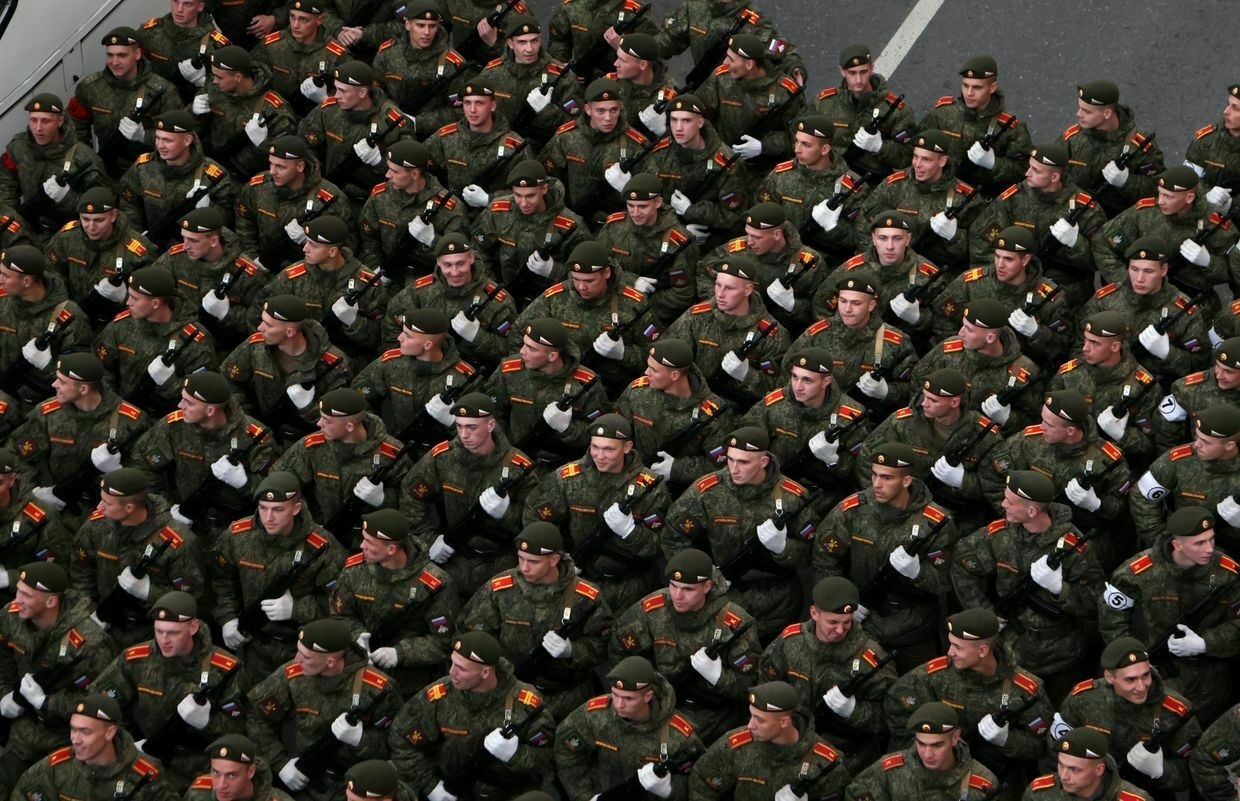
-
EU approves new tariffs on Russian, Belarusian agricultural goods
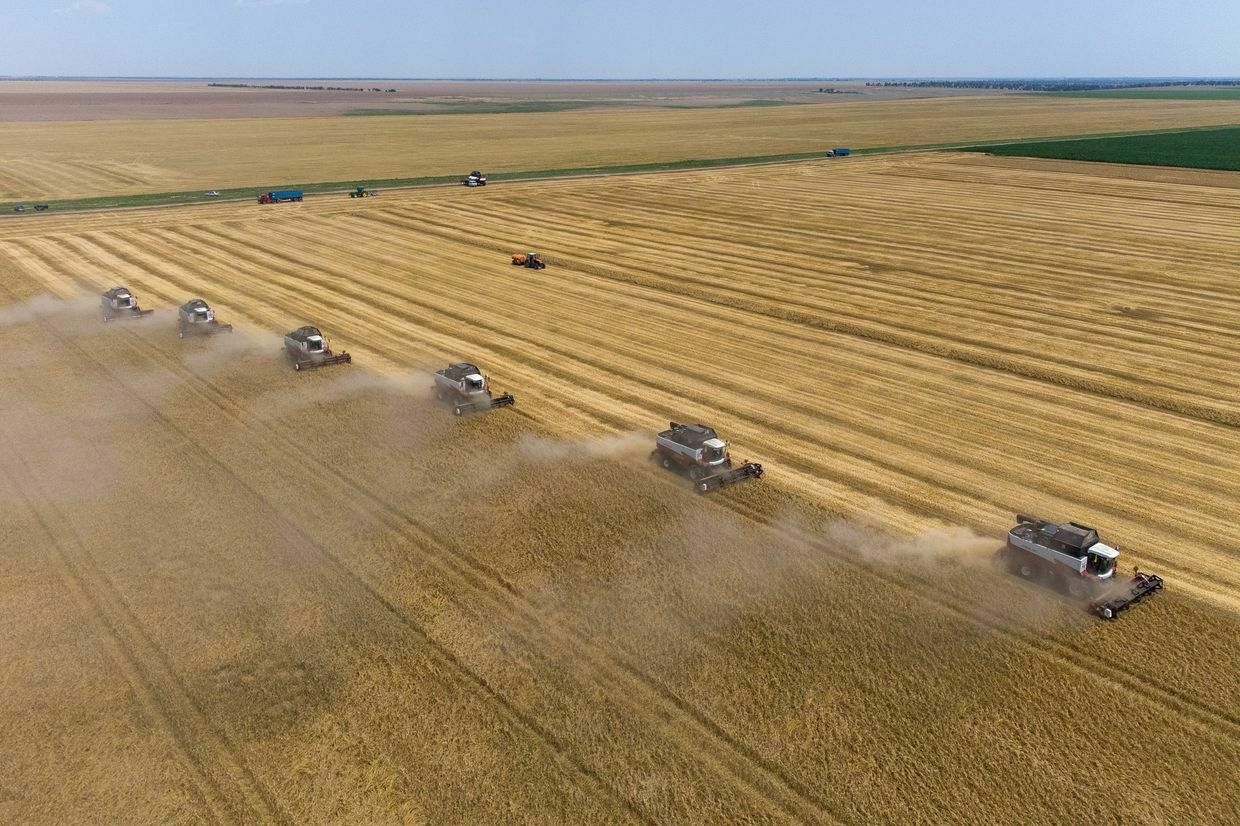
The Council of the EU on June 12 approved fresh tariffs on fertilizers and remaining agricultural goods from Russia and Belarus, aiming to reduce Russian export revenues.
The measures target those goods that have not yet been subject to additional customs duties and will enter into force on July 1. The tariffs on fertilizers will increase gradually over the next three years.
The step comes as the EU readies additional sanctions against Russia as it continues to wage its all-out war against Ukraine.
“Polish Presidency motto is ‘Security, Europe!’ and these measures increase our economic security by reducing dependencies from Russia,” said Michal Baranowski, the trade undersecretary at the Polish Economy Ministry.
“We are further reducing Russia’s export revenues and therefore its ability to finance its brutal war. This is united Europe at its best,” he said in a statement.
The new tariffs will apply to goods that made up around 15% of all agricultural imports from Russia in 2023. Fertilizer tariffs will focus on certain nitrogen-based products, the Council said in a statement.
Russian fertilizers accounted for more than a quarter of all of the EU’s imports in this sector in 2023, worth almost $1.5 billion.
Apart from stifling Russia’s trade revenue, the step also aims to reduce the EU’s dependence on Russian and Belarusian goods, protect European farmers, and diversify the supply.
The EU adopted higher tariffs on cereals, oilseeds, and some other products from Russia and Belarus in May 2024. Earlier this year, the European Commission proposed imposing similar measures on all remaining agricultural products from the two countries.
Putin’s suspected daughter found working in anti-war galleries in ParisNastya Rodionova, a Russian writer and artist who has been based in Paris since 2022, had only met gallery manager Luiza Rozova in passing at events before she learned who the 22-year-old’s parents were. Described by a number of people as a “very nice and well-mannered girl,” Rozova isThe Kyiv IndependentKate Tsurkan

-
TO TEARS! Ukrainian prisoners return home #shorts
-
US Ambassador to Russia Tracy leaving post, embassy says
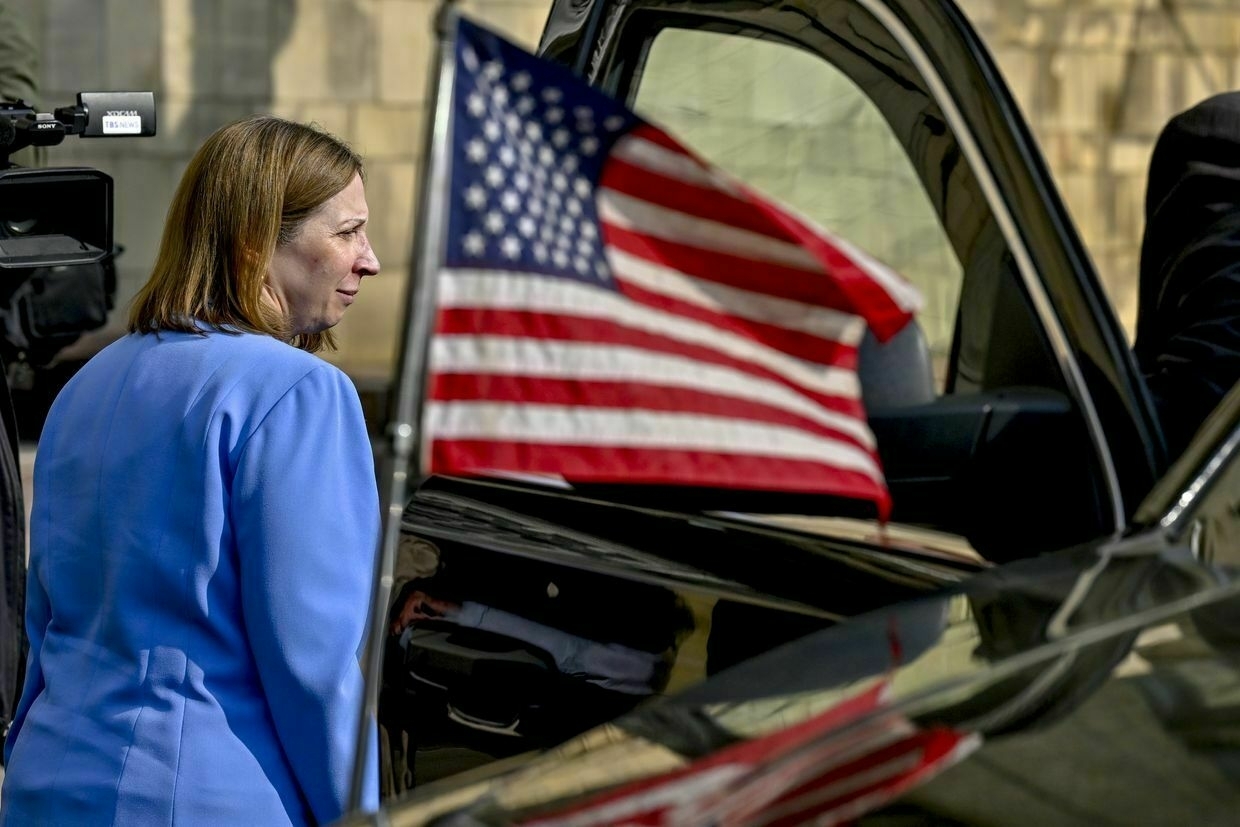
U.S. Ambassador to Moscow Lynne Tracy will soon be stepping down from her post, the U.S. Embassy in Russia announced on June 12.
The statement said that Tracy is “concluding her mission at the U.S. Embassy in Russia,” without providing further details.
The move comes as U.S. President Donald Trump makes a decisive break from the previous Biden administration’s Russia policy, aiming to restore relations and negotiate a peace deal in Ukraine.
Tracy replaced John Sullivan at the key diplomatic post in Moscow in January 2023, after being nominated by former President Joe Biden.
A seasoned diplomat, Tracy previously served as the U.S. ambassador to Armenia and held posts at diplomatic missions in Russia, Turkmenistan, Pakistan, Kazakhstan, Afghanistan, and Kyrgyzstan.
The embassy announced a live stream on June 13 to “bid farewell” to the outgoing envoy.
Tracy led the U.S. mission in Russia in one of the lowest points of the U.S.-Russian relationship in decades, as Washington imposed massive sanctions on Moscow and backed Ukraine against Russian aggression.
Though diplomatic contacts during this period were limited, Tracy played a key role in negotiating the release of U.S. citizens held in Russia, such as Wall Street Journal reporter Evan Gershkovich.
The ambassador is concluding her mission after around two years, a similar time period to her predecessor. It is not immediately clear who will replace her.
In April, Bridget Brink, the U.S. ambassador to Ukraine, unexpectedly resigned, later explaining the move by opposition to Trump’s foreign policy.
Russia also appointed its new envoy to the U.S., Alexander Darchiev, earlier this year amid a thaw in U.S.-Russian ties under Trump.
America’s weak strongmanOver the past two months, financial investors have hit upon a new trading strategy, based on a simple rule: TACO — Trump Always Chickens Out. America’s president threatens to slap massive import tariffs on friends and foes alike, or to remove the Federal Reserve chair, only to back down whenThe Kyiv IndependentTimothy Snyder
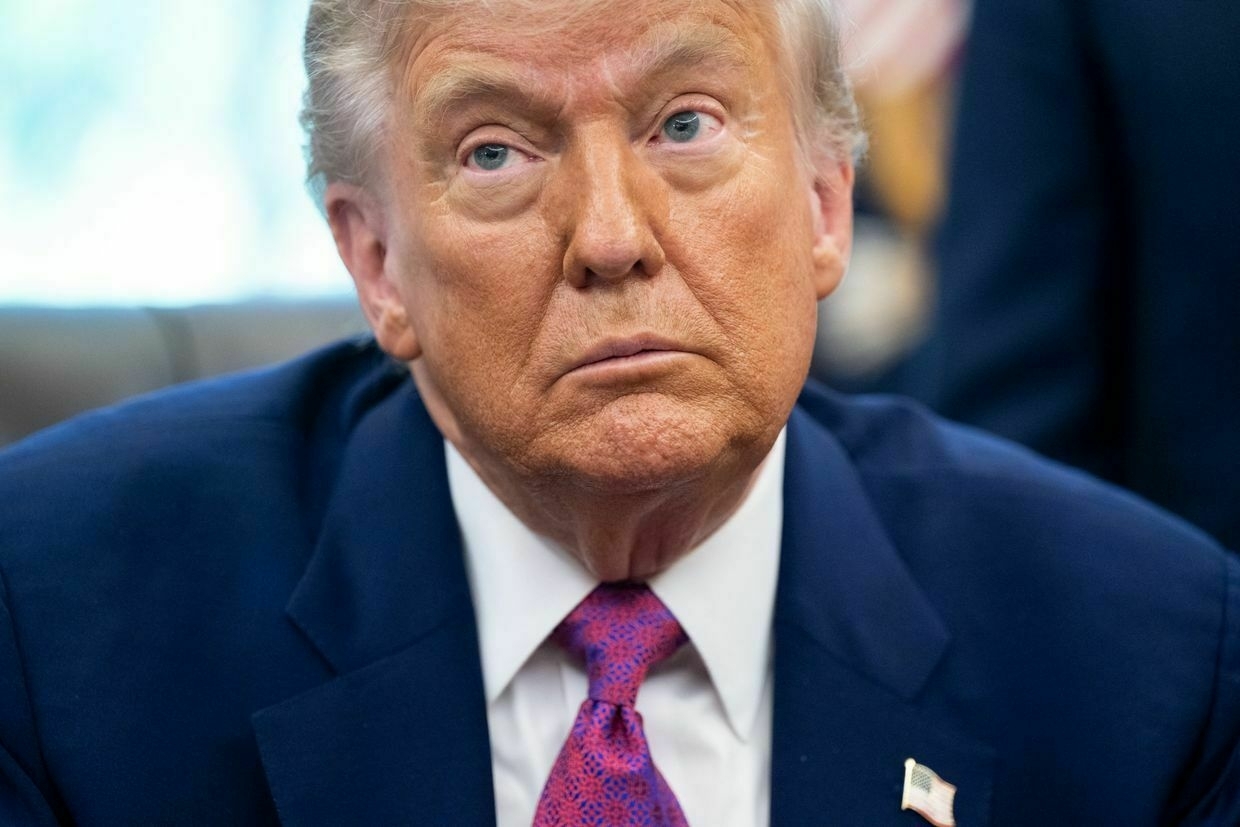
-
As Russian losses in Ukraine hit 1 million, Putin faces an economic time bomb
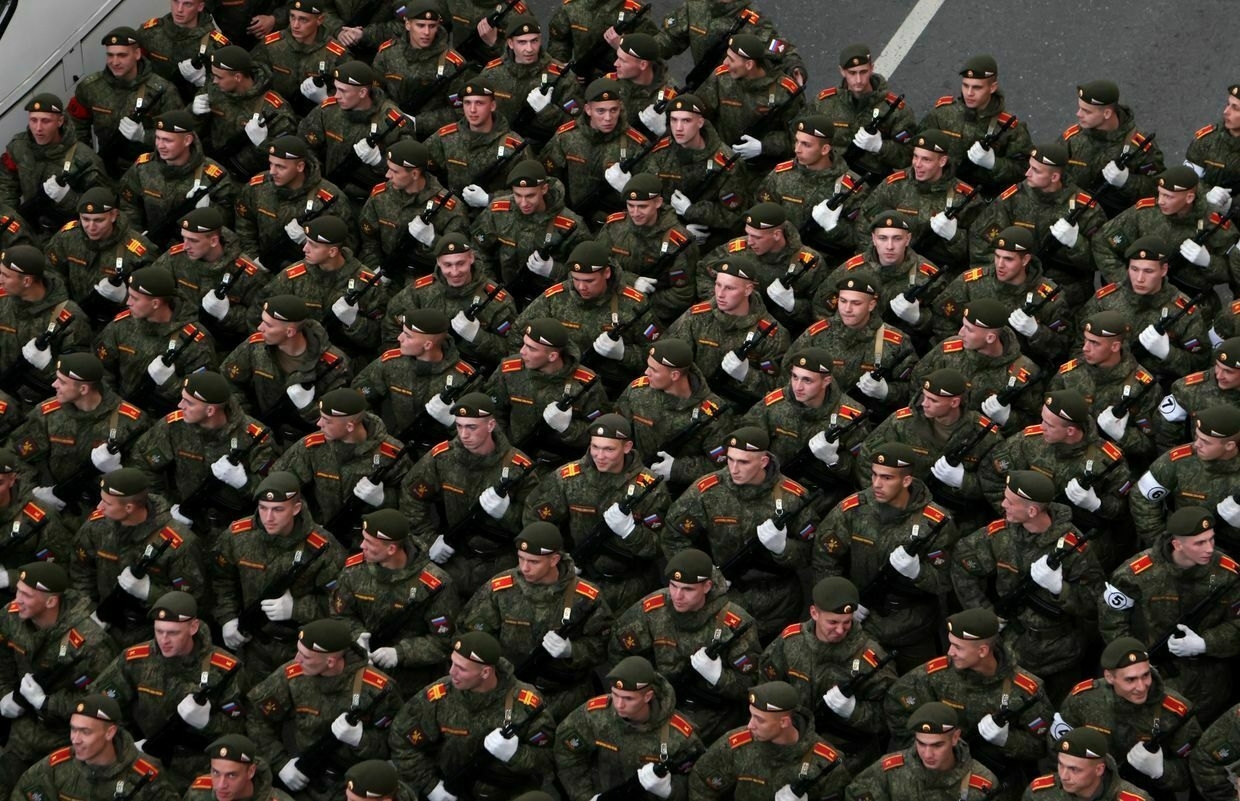
Russian losses in Ukraine hit a massive, and grim milestone on June 12 — 1 million Russian soldiers killed or wounded during the 39-month-long full-scale war, according to figures from Kyiv.
Although hugely symbolic, the number is unlikely to prompt a change in tactics from Moscow as it gears up for more offensives this summer, and escalates drone and missile attacks on Ukrainian civilians.
But behind the figure lies an economic time bomb that the Kremlin will find impossible to ignore.
"(Russian President) Vladimir Putin made a fundamental strategic mistake in deciding how to resource this war," George Barros, Russia team lead at the Institute for the Study of War (ISW), told the Kyiv Independent.
“What Vladimir Putin has done is he has created a system in which he doesn’t use the monopoly of violence of the Russian state to coerce Russians to go fight and die in Ukraine, as the Soviet Union might have. What Putin has done is he’s created an alternative social contract where he pays you to go fight in Ukraine.
“That strategy can work if you’re planning on running a short war. It does not work if you are running a multi-year protracted war."
Russia’s two armiesRussia effectively has two armies — a conscript army, and a contract army.
Russia’s conscript army is the country’s standing armed forces that are required to defend Russia itself.
To maintain this force, the Kremlin conducts conscription twice a year, in spring and fall, requiring eligible men to serve for one year.
In the latest draft, Putin signed a decree on March 31 ordering the spring conscription of 160,000 men.
But crucially, conscripts by law are not allowed to be sent abroad to fight wars in foreign countries, something which is not only a legal contract, but a social contract that is deeply embedded in Russian society — civil society groups consisting of the mothers of conscripts are perhaps the only group of Russian citizens that Putin is still forced to respect and listen to.
This is where Russia’s contract army comes in.
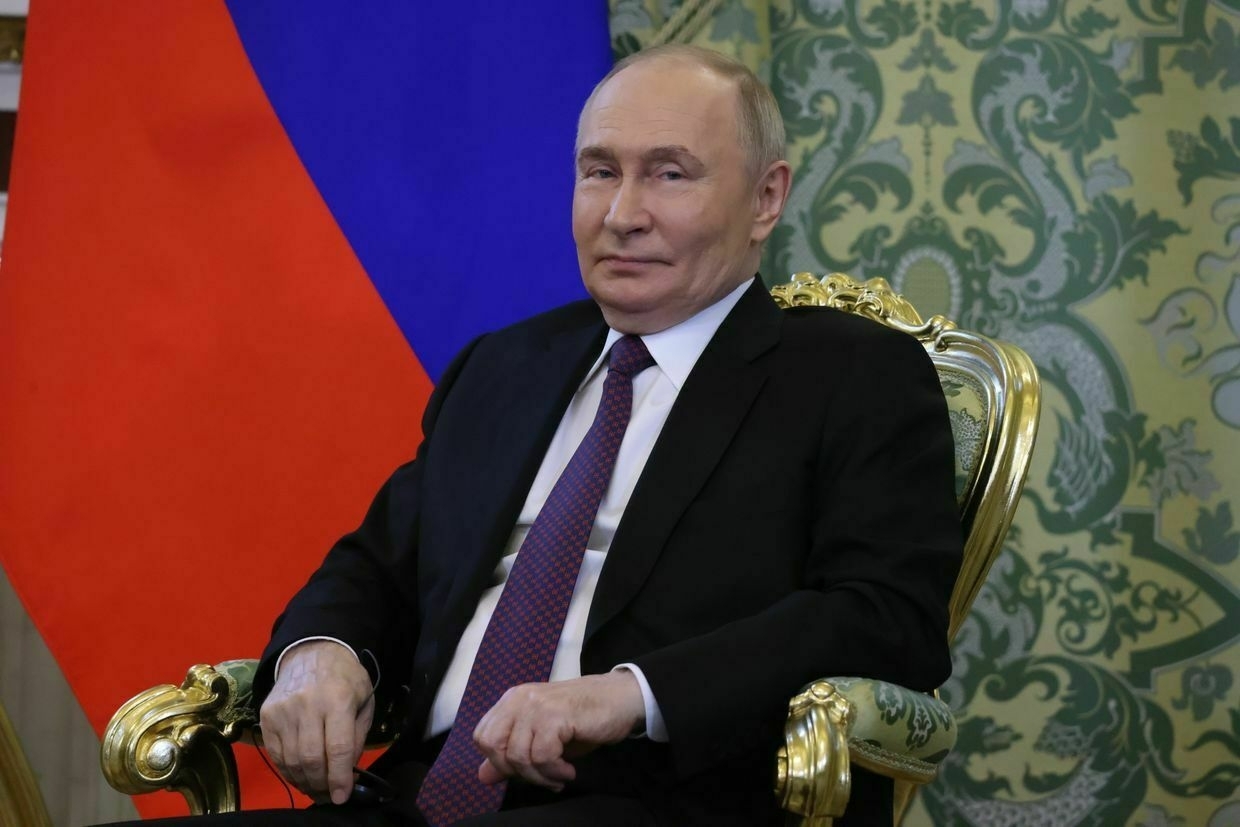
Russian President Vladimir Putin in Moscow, Russia, on May 28, 2025. (Contributor / Getty Images) “When the full-scale invasion started, the Russians attacked Ukraine with what they call the contract servicemen, the professional military who have some experience, and (voluntarily) sign contracts for a fixed period of time,” Kateryna Stepanenko, Russia deputy team lead and analyst at the Institute for the Study of War (ISW), told the Kyiv Independent.
But Russia soon ran into a problem — the Armed Forces of Ukraine.
The Kremlin had envisioned a swift and easy victory over Ukraine, and the capture of Kyiv within a matter of days. This proved to be a disastrous miscalculation and instead, many of Russia’s most elite troops and modern equipment were obliterated by Ukrainian resistance.
As the war dragged on, and Russia’s losses mounted, Moscow needed to replenish its forces without drawing upon its conscript army and announcing a full mobilization to avoid unrest.
A partial mobilization announced in September 2022 led to the only widespread protests against the war inside Russia during the entire full-scale invasion, making clear to Putin that announcing anything more would cause him serious problems.
“The Russians realized that they were in a challenging political situation,” Stepanenko said.
The solution? Pay people to fight.
“It is the only way of recruitment for the war now because ideologically motivated recruits ended in spring-summer 2022 and partial mobilization of the fall 2022 created domestic political tensions and risks which were considered as unacceptable for the Kremlin in those circumstances,” Pavel Luzin, senior fellow with the Democratic Resilience Program at the Center for European Policy Analysis (CEPA), told the Kyiv Independent.
The contract soldier’s priceRussia’s mounting losses throughout the war created a double-edged problem — more and more replacements were needed, but attracting them to what was clearly such a high-risk endeavour necessitated increasing rewards.
The solution? Keep offering more and more money.
Sign up bonuses for joining the Russian army have ballooned over the course of the war. In July 2024, Putin ordered a doubling of the lump-sum payment offered to recruits in September 2022 to 400,000 rubles (over $5,000).
But this was just the base level payment — the Kremlin has placed recruitment quotas on Russian oblasts, meaning some have had to offer many times more than this in order to reach them.
“There are some oblasts in central Russia that are offering up to $40,000, 3 million rubles plus, just for a one-time sign-up bonus,” Barros said.
For context, the average Russian monthly wage in 2024 was $980, so a one-time sign up bonus of $40,000 is nearly four times higher than what the average worker can expect to make in a whole year.
But with such huge losses in Ukraine, the bill for the Kremlin is huge.
“They lose and recruit somewhere in the ballpark of 35,000 to 45,000 people per month, and perhaps they recruit a little bit north of that number,” Barros said.
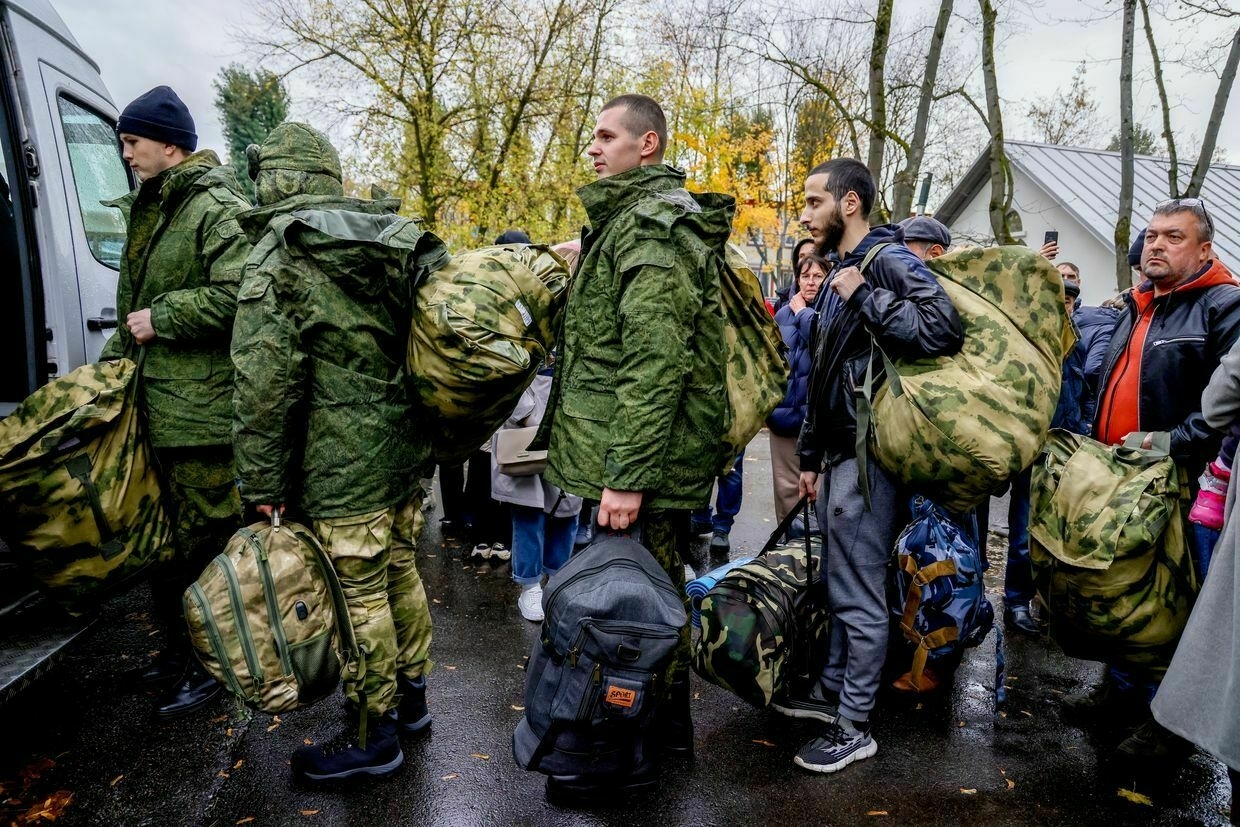
More than 200,000 people have reported for service under partial mobilization in Moscow, Russia, on Oct. 4, 2022. (Sefa Karacan / Anadolu Agency via Getty Images) 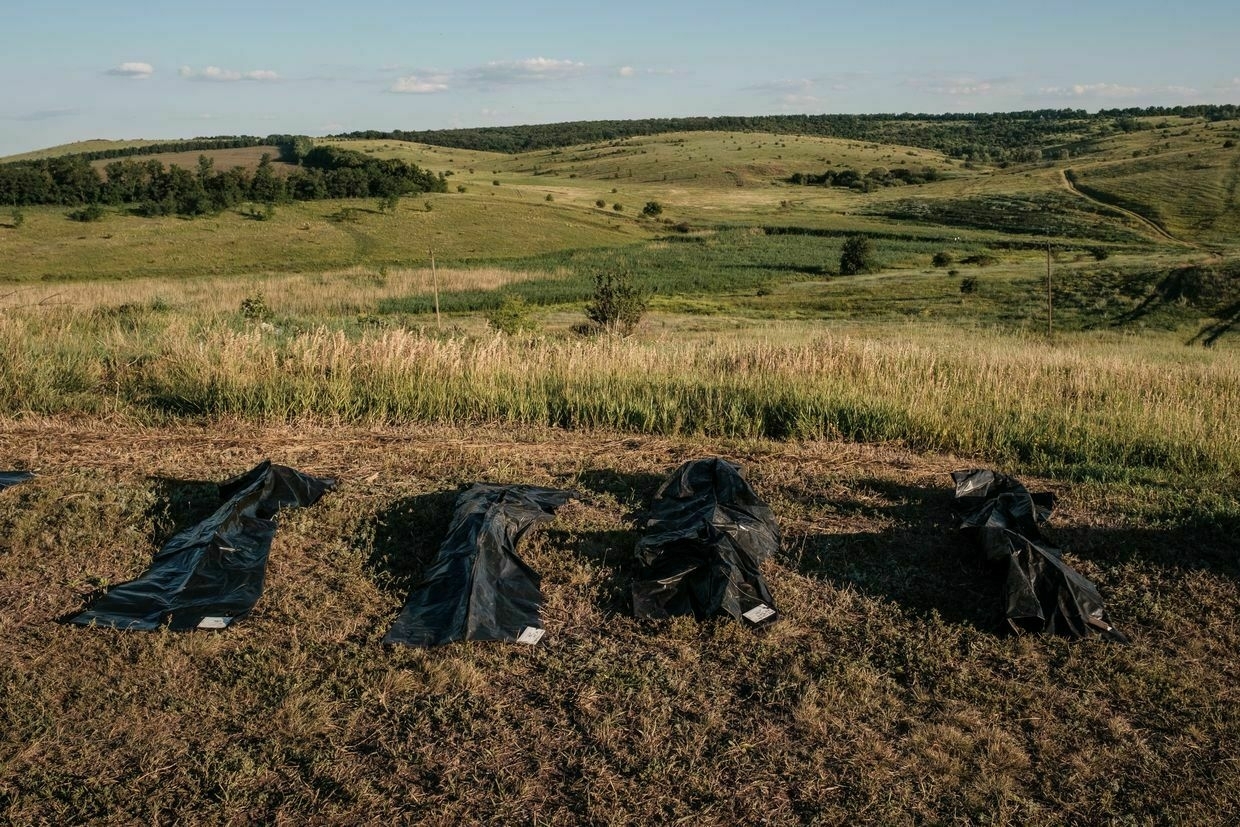
Remains of Russian soldiers found in the Bakhmut battle zone, in Sloviansk, Donetsk Oblast, Ukraine, on June 29, 2024. (Pablo Miranzo / Anadolu via Getty Images) “At $40,000 a head just for the sign-up bonus, let alone salaries and other benefits and remittances if you’re killed or wounded, this is a very fast way to not be sustainable."
According to an analysis by economist Janis Kluge, Russia’s daily bill just for sign-up bonuses is $24 million.
The ballooning bills come at a time when Russia’s economy is already under huge strain from Western sanctions and falling oil and gas revenues.
“The implications for Russia are grave,” energy security analyst Wojciech Jakóbik wrote in an op-ed for the Kyiv Independent this week.
“Military spending has ballooned to 6.3% of GDP — its highest level since the Cold War — while the budget deficit continues to rise,” he added.
“To fund its war, the Kremlin is raiding reserves, raising taxes, and cutting social programs. Absent war spending, Russia might already be in recession."
Could Russia’s economy collapse?Predictions about the imminent collapse of Russia’s economy have been made throughout its full-scale invasion of Ukraine, yet so far it hasn’t crashed and burned as some expected.
But three years of sanctions are eroding the country’s fiscal stability, despite Moscow claiming otherwise.
Russian GDP growth has dropped precipitously this year as sanctions hamper its main sources of income — oil and gas revenue — and curb imports of components needed for its military-industrial complex.
According to Barros, making any predictions about whether or not the Russian economy is going to collapse is “supremely difficult to do,” but the signs for the Kremlin “don’t bode well."
“If you look at the current Russian economic indicators, for example their inflation rate, their overnight lending interest rates, Russian monetary constraints… government spending is out of control — it’s a very loose fiscal policy and so the economy is at risk of overheating,” he said.
“I don’t know to what extent the economy can continue to last."
Barros said one major thing to keep an eye on are the Russian banks that are taking on “tremendous amounts of debt” in order to finance the Russian economy and the Kremlin’s war machine in Ukraine.
“I suspect what will happen one day at the current rate is a Russian bank will have to default on its debt and that will trigger some sort of financial meltdown,” he said.
“I can’t name the time or the hour or the place, but it seems very much like Vladimir Putin today is writing checks that Vladimir Putin a year or two years from now will not be able to cash."
Keeping up the pressure on the Russian economyCurrently, Western sanctions against Russia are still in place and the EU has just announced its 18th package.
In the U.S., a bipartisan sanctions bill, introduced on April 1 by Republican Senator Lindsey Graham and Senate Democrat Richard Blumenthal, seeks to impose a 500% tariff on imports from countries that continue purchasing Russian oil and raw materials.
This would deal another major blow to the Kremlin and its ability to wage war but U.S. President Donald Trump seems in little rush to hurry it through.
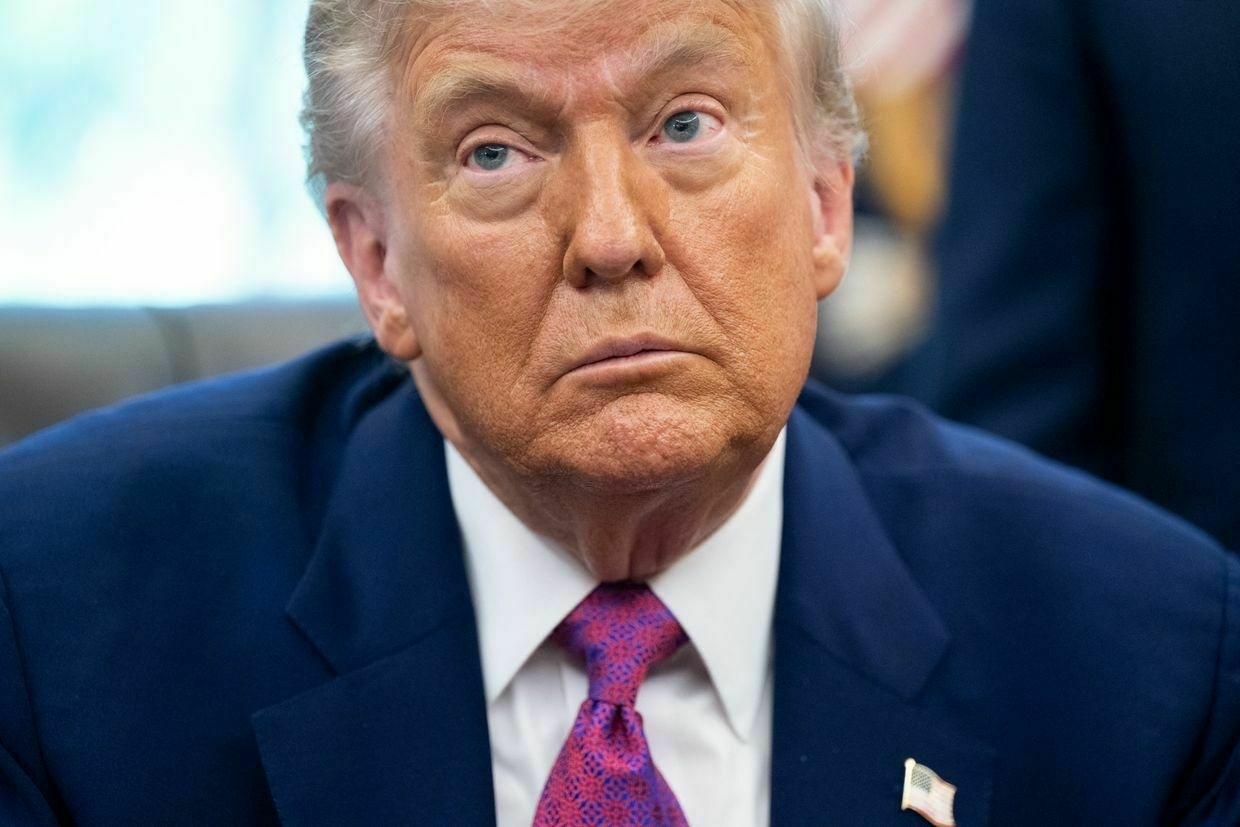
US President Donald Trump in Washington, DC, on June 10, 2025. (Saul Loeb / AFP via Getty Images) But the biggest factor in bringing down the Russian economy remains in the hands of Ukraine.
“We have to keep reminding ourselves that the key driver, the engine of Russia’s economic woes, is in fact its casualty rate and its losses on the battlefield in Ukraine,” Barros said.
“That is what is driving the need to recruit and replace 45,000 soldiers a month. That is what is destroying all the main battle tanks. That is what is actively destroying the Russians.
“And the minute the Ukrainians become less lethal, the minute that the Ukrainians do not impose those heavy losses on Russia at the same scale, then the economic picture becomes much better for the Kremlin."
Putin’s suspected daughter found working in anti-war galleries in ParisNastya Rodionova, a Russian writer and artist who has been based in Paris since 2022, had only met gallery manager Luiza Rozova in passing at events before she learned who the 22-year-old’s parents were. Described by a number of people as a “very nice and well-mannered girl,” Rozova isThe Kyiv IndependentKate Tsurkan

-
Ukraine, Russia carry out another exchange of POWs under Istanbul deal
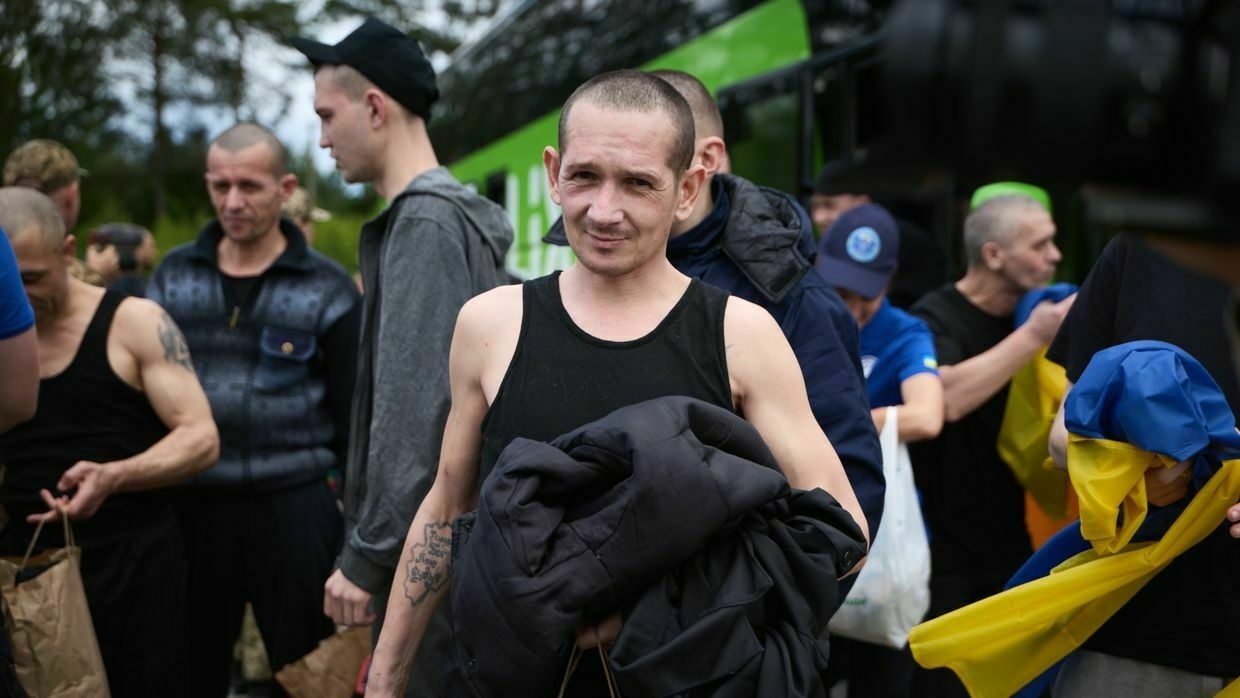
Editor’s note: The story is being updated.
Ukraine has brought home another group of service members from Russian captivity, President Volodymyr Zelensky announced on June 12, saying the latest exchange focused on “severely wounded and seriously ill warriors."
The prisoners of war (POWs) were released as part of a prisoner exchange with Russia agreed upon during recent peace talks in Istanbul, the Coordination Headquarters for the Treatment of the POWs said.
-
Russia cultivates pro-Kremlin African elite through education, Ukraine's intel warns
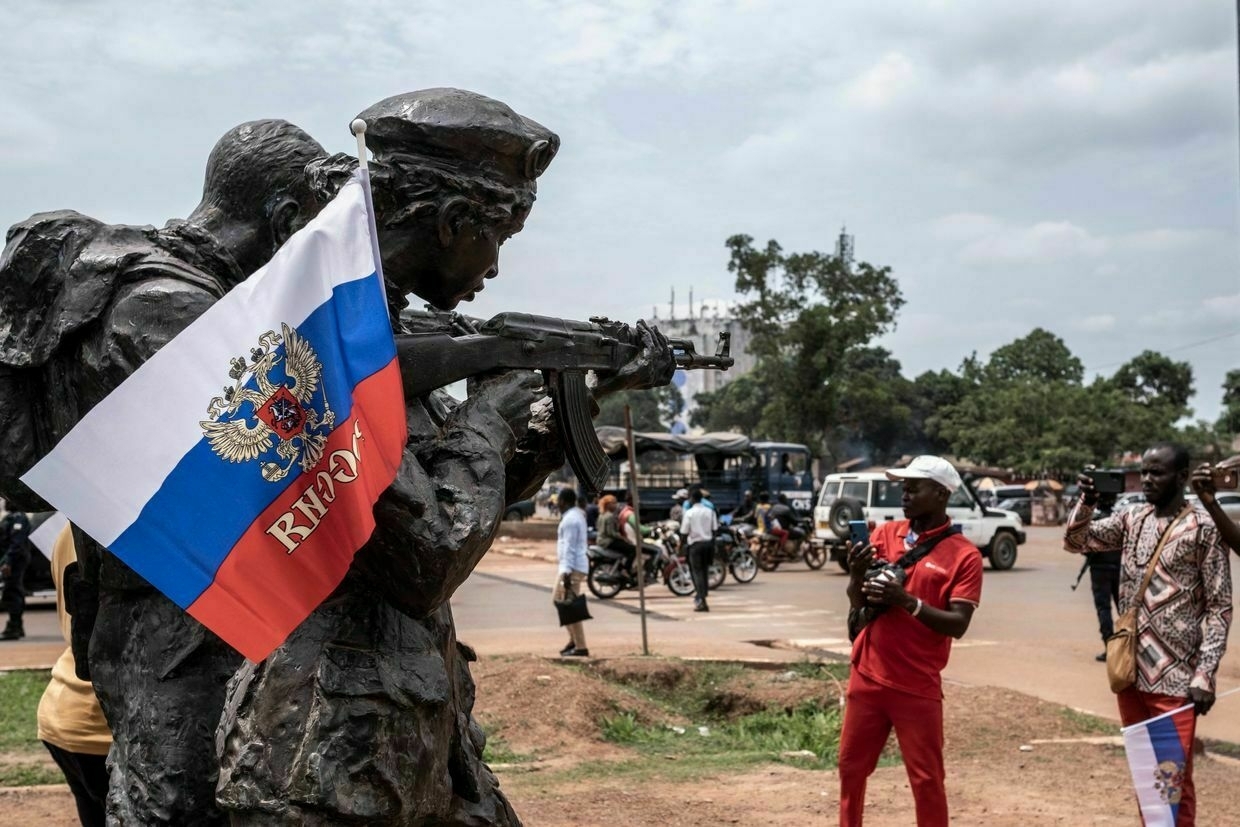
Russia is quietly building a pro-Kremlin power base across Africa by targeting the continent’s youth and academic institutions with state-funded educational programs and cultural influence campaigns, Ukraine’s military intelligence agency (HUR) said on June 12.
According to Andrii Yusov, the agency’s spokesperson, the Kremlin’s strategic aim is to shape a future generation of African elites that are politically and ideologically aligned with Moscow’s interests.
“African education and sports are increasingly being used by Russia as tools of hybrid influence with a view to forming a new generation of political and administrative elites loyal to the Kremlin,” Yusov said in a statement.
HUR says that Russia has been preserving and even expanding government-funded university quotas for African students, particularly in fields such as agriculture, engineering, pedagogy, and medicine. These programs are designed to build networks of influence while providing young professionals with technical skills under the umbrella of Russian ideology.
In parallel, Moscow is pushing to introduce Russian language courses and teacher training initiatives in prominent African universities. The long-term goal, according to Yusov, is to synchronize African educational systems with Russian standards.
Russia has long been using hybrid warfare and disinformation in Africa, particularly since it started the full-scale invasion of Ukraine in 2022.
While some African countries have maintained a neutral stance or abstained from key U.N. votes condemning Russian aggression, Ukrainian officials and independent analysts say the Kremlin is actively working to tilt that neutrality in its favor by exploiting historical Soviet ties and offering academic and economic incentives.
Beyond education, HUR also flagged the Kremlin’s growing investment in youth sports programs on the continent as part of its broader hybrid warfare toolkit.
Bloomberg reported in June 2024 that the Kremlin is coercing thousands of migrants and foreign students, particularly from Africa, to fight in its war against Ukraine.
African POWs on how they ended up fighting for RussiaIn this exclusive interview, the Kyiv Independent interviews Somali and Sierra Leonean prisoners of war who fought for Russia in its war against Ukraine.The Kyiv IndependentDaria Shulzhenko
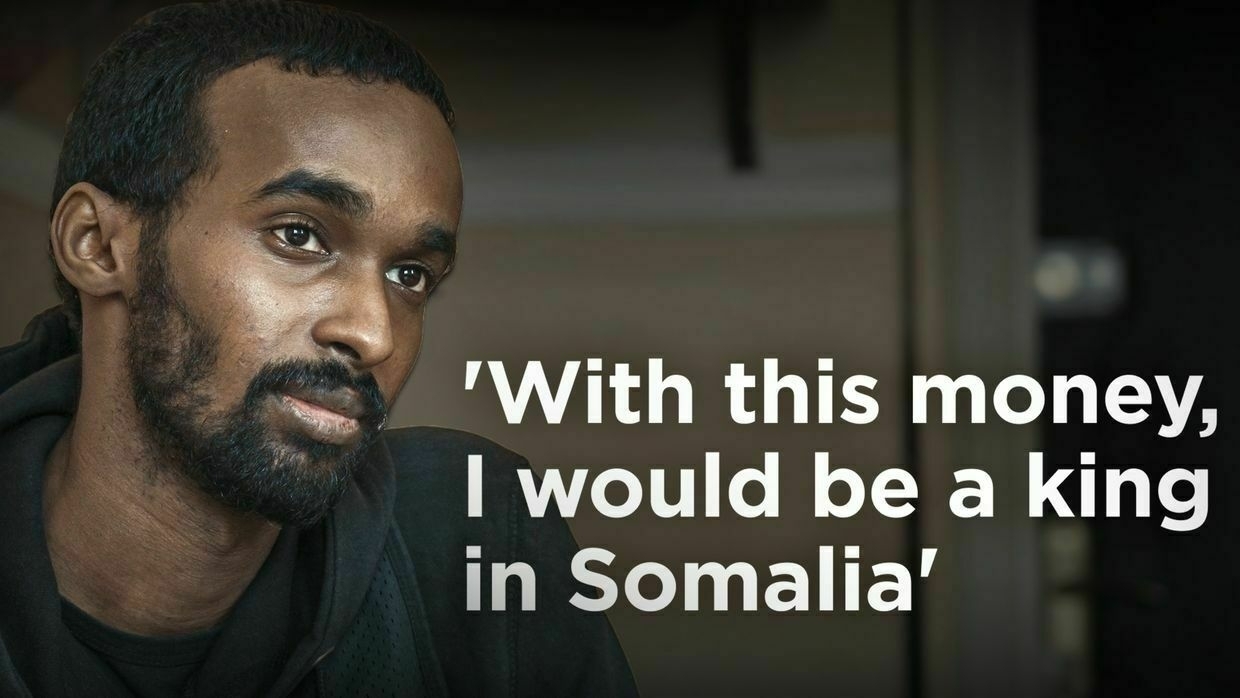
-
NATO expands satellite surveillance to monitor Ukraine, eastern flank
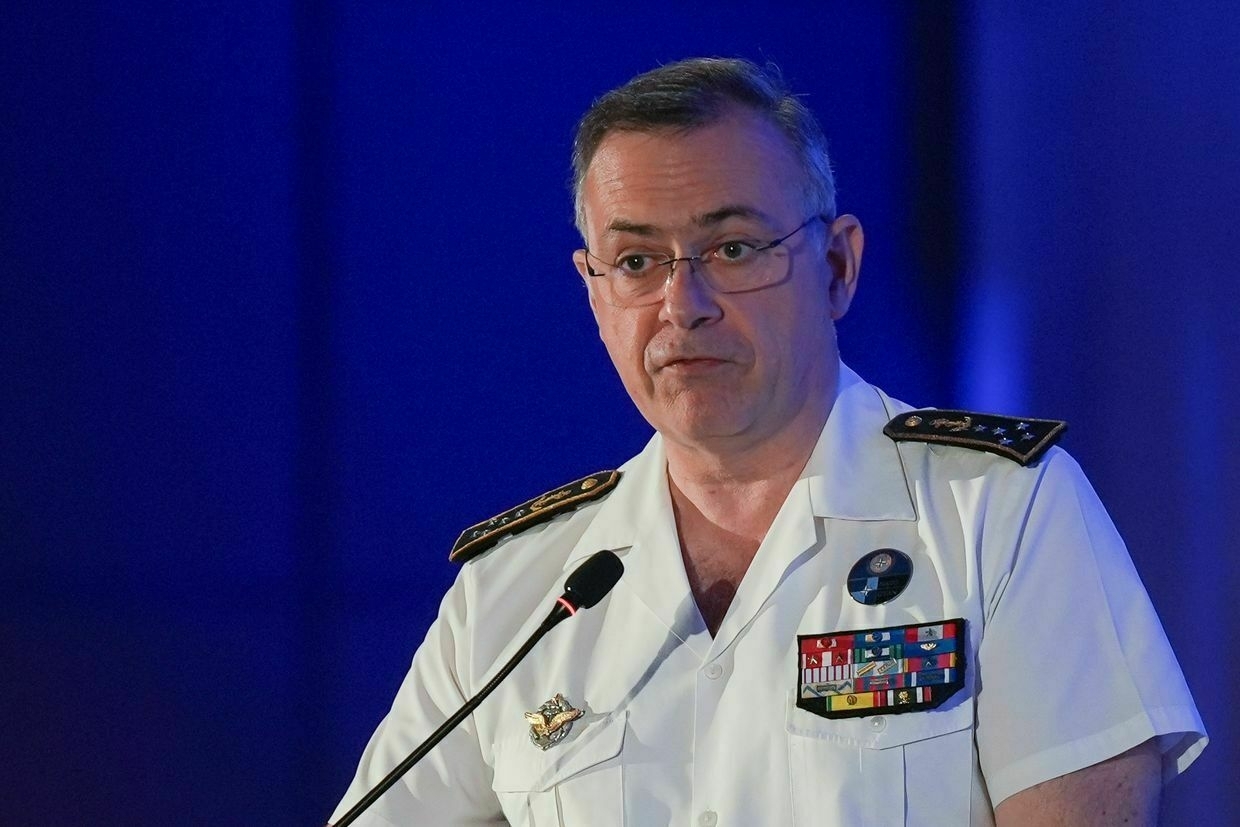
NATO is rolling out a new satellite surveillance system designed to monitor military activity in Ukraine and along the alliance’s eastern borders, senior commander Admiral Pierre Vandier told Bloomberg in comments published on June 12.
The initiative, named Smart Indication and Warning Broad Area Detection (SINBAD), will allow NATO to scan vast territories with unprecedented frequency, using AI-powered analysis to detect changes and alert allies to potential threats. The alliance has reportedly selected U.S. satellite imaging firm Planet Labs as the project’s key partner.
“Today, we’re not certain the Russians will stop at Ukraine,” Vandier said. “We’ll be able to tell them: we’re watching,” he added.
Vandier, who oversees the alliance’s battlefield innovations, emphasized that the ability to monitor troop movements and detect ceasefire violations has become a central concern for European allies, particularly as discussions continue around future peace frameworks for Ukraine.
Previously, French President Emmanuel Macron and British Prime Minister Keir Starmer initiated a so-called “coalition of the willing,” uniting countries that would back a potential peace agreement between Ukraine and Russia.
So far, at least 37 countries have been involved in the coalition’s discussions, with 15 reportedly ready to contribute their troops. Other members have been asked to provide other forms of support, including intelligence, arms, or naval support.
The launch of SINBAD comes as NATO seeks to boost its own capabilities in space surveillance, a field where the alliance has long relied heavily on U.S. assets. While the U.S. remains central to NATO’s space strategy, European allies are moving to reduce dependency, especially amid shifting U.S. foreign policy under President Donald Trump.
Trump has repeatedly cast doubt on the U.S. commitment to NATO, signaled intentions to reduce U.S. troop presence in Europe, and blamed Ukraine’s pursuit of alliance membership for provoking the war.
The alliance is also expected to endorse a new defense spending benchmark, 5% of economic output, with 3.5% for core defense and 1.5% for related sectors, at its upcoming summit in The Hague on June 24–25.
President Volodymyr Zelensky confirmed that Ukraine has been invited to attend the NATO leaders' summit. “We were invited to the NATO summit. I think this is important,” Zelensky said during a June 2 press conference.
Zelensky noted ongoing discussions with NATO Secretary General Mark Rutte and other alliance officials on Ukraine’s potential role and outcomes at the summit.
Russia doubts NATO’s Article 5, could use ‘little green men’ to test it, German intelligence chief warns“They don’t need to send tanks for that,” German intelligence chief Bruno Kahl told Table Media. “They just have to send ‘little green men’ to Estonia to defend the allegedly oppressed Russian minority.”The Kyiv IndependentMartin Fornusek
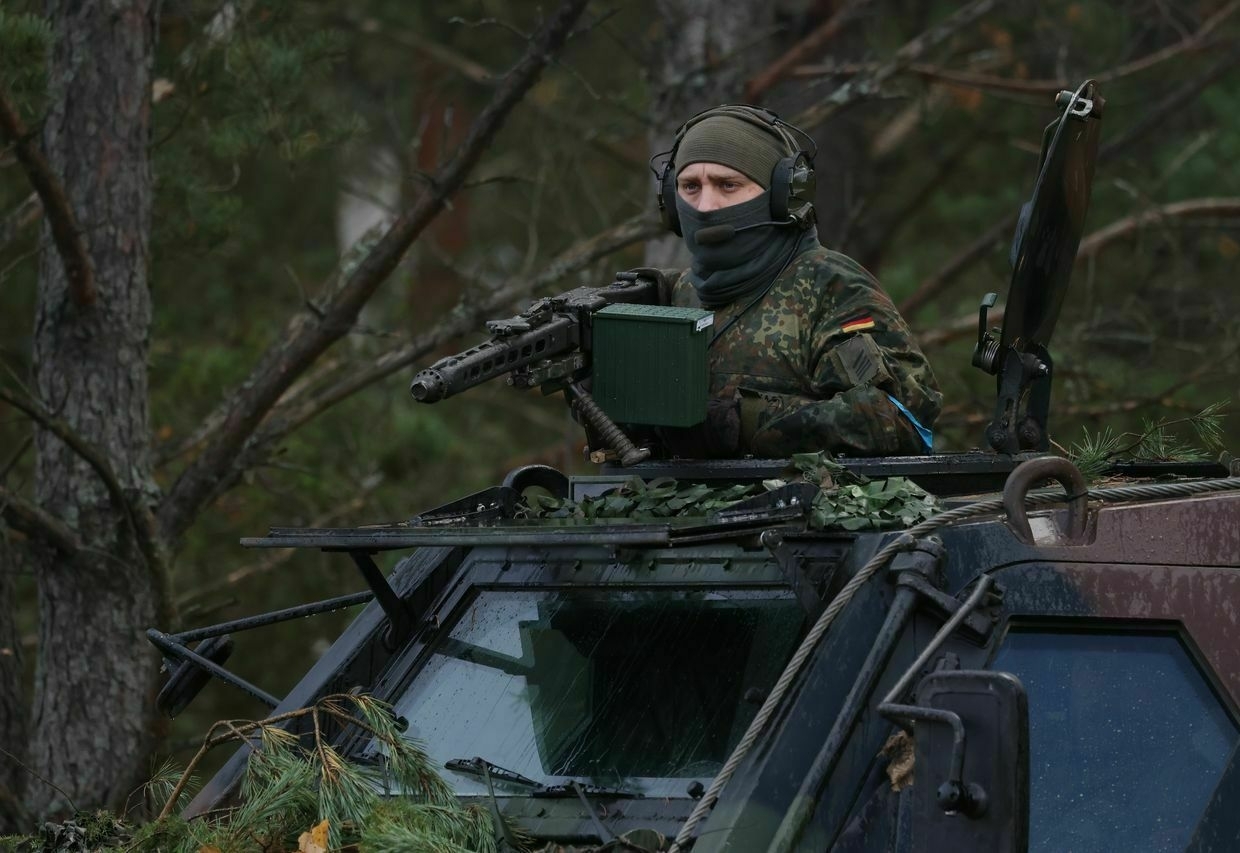
-
'They are not so successful' — Zelensky rejects claims of major Russian advances
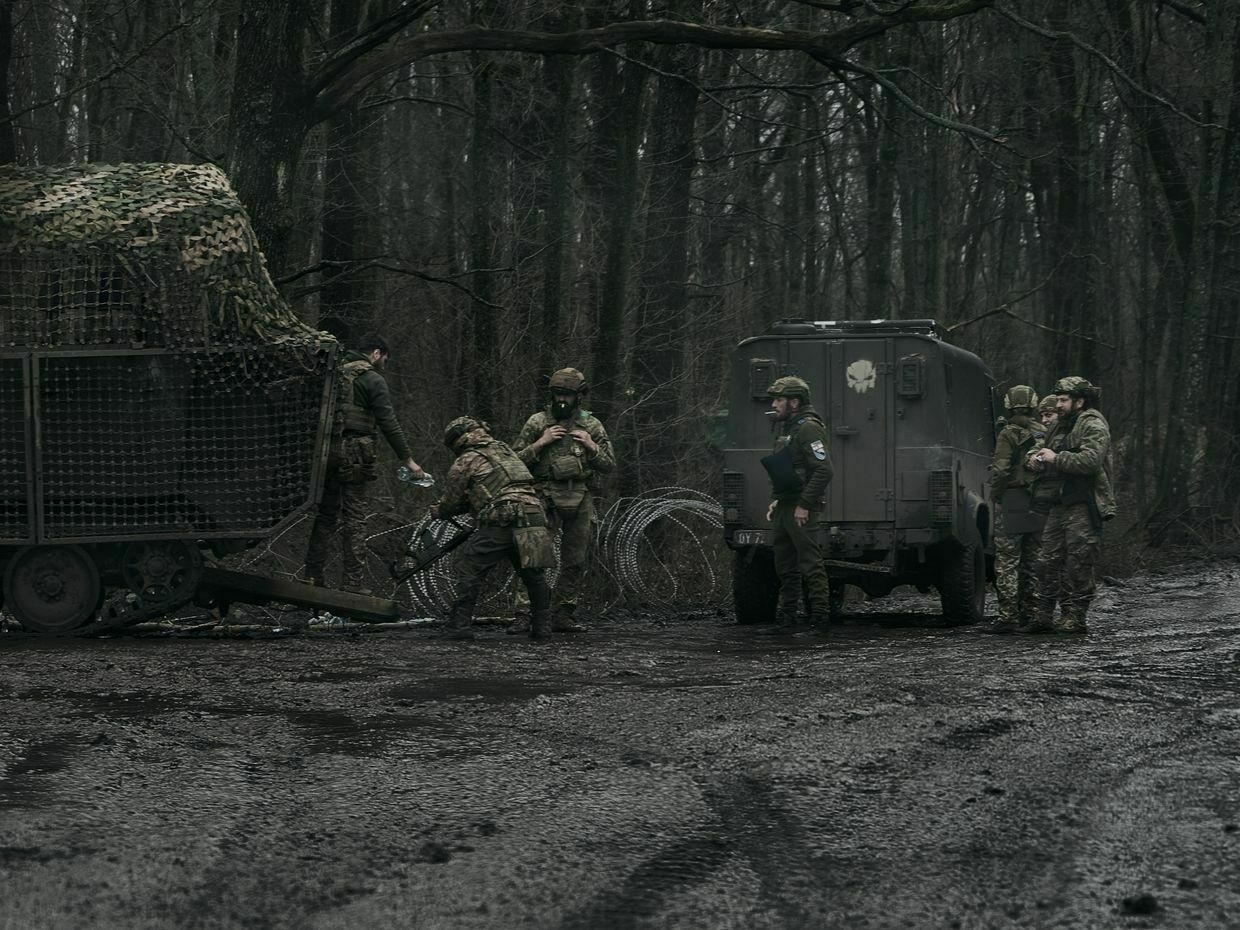
President Volodymyr Zelensky dismissed Russian claims of significant battlefield gains, calling them part of a disinformation campaign during an interview with Bild published on June 12.
Zelensky rejected claims of Russian advance as “a Russian narrative,” insisting that Ukraine’s forces have been holding off a renewed offensive for nearly three weeks.
“The Russians are not so successful, to say the least,” Zelensky said.
His remarks come amid a surge in Russian military operations across Ukraine’s eastern and northern regions, including Russian claims of territorial gains in Dnipropetrovsk and Sumy oblasts — assertions Kyiv denies.
Kremlin spokesperson Dmitry Peskov told the Russian state media on June 9 that the offensive in Ukraine’s Dnipropetrovsk Oblast aims to establish a so-called “buffer zone” on Ukrainian territory.
The statement followed Russian President Vladimir Putin’s earlier announcement that Moscow intends to create security corridors along Ukraine’s borders with Russia’s Kursk, Bryansk, and Belgorod regions.
Ukrainian officials denied any Russian advances into Dnipropetrovsk.
“As of the morning of June 9, all Russian information, including Peskov’s statements, about an offensive in Dnipropetrovsk Oblast does not correspond to reality,” said Andrii Kovalenko, head of Ukraine’s Center for Countering Disinformation.
Ukraine’s Southern Operational Command described the situation as “tense” but said no breakthroughs had occurred.
Despite the absence of confirmed ground incursions, Dnipropetrovsk Oblast has faced frequent missile and drone attacks. In April, the region initiated mandatory evacuations from four front-line villages as a precautionary measure.
Separately, open-source monitoring group DeepState showed some advances near the Russian border in Sumy Oblast. On June 8, DeepState confirmed that Russian troops had occupied the village of Loknia in Ukraine’s Sumy Oblast.
Located about 30 kilometers (20 miles) north of Sumy, the village lies close to the Russian border in an increasingly volatile region. The Ukrainian General Staff has not commented on the development.
According to an article by Ukrainska Pravda, Russian forces began advancing into northern Sumy Oblast in late February or early March, taking advantage of the withdrawal of Ukraine’s most combat-capable units. These were reportedly replaced by newly formed, under-resourced brigades with minimal combat experience and limited equipment.
Since March, Russia has reportedly taken control of about 200 square kilometers (80 square miles) in northern Sumy Oblast, including roughly a dozen small villages. The advances have triggered civilian evacuations. As of May 31, regional authorities ordered the evacuation of 213 settlements.
As Russia inches closer to Dnipropetrovsk Oblast, new Ukrainian region might soon be at warMoscow said its troops had crossed into Dnipropetrovsk Oblast and were conducting offensive operations in the region, a claim Kyiv quickly denied as “Russian disinformation.” Russian troops have been pushing toward Dnipropetrovsk Oblast for months, trying to solidify the southern flank to capture Pokrovsk and the remaining parts of theThe Kyiv IndependentAsami Terajima
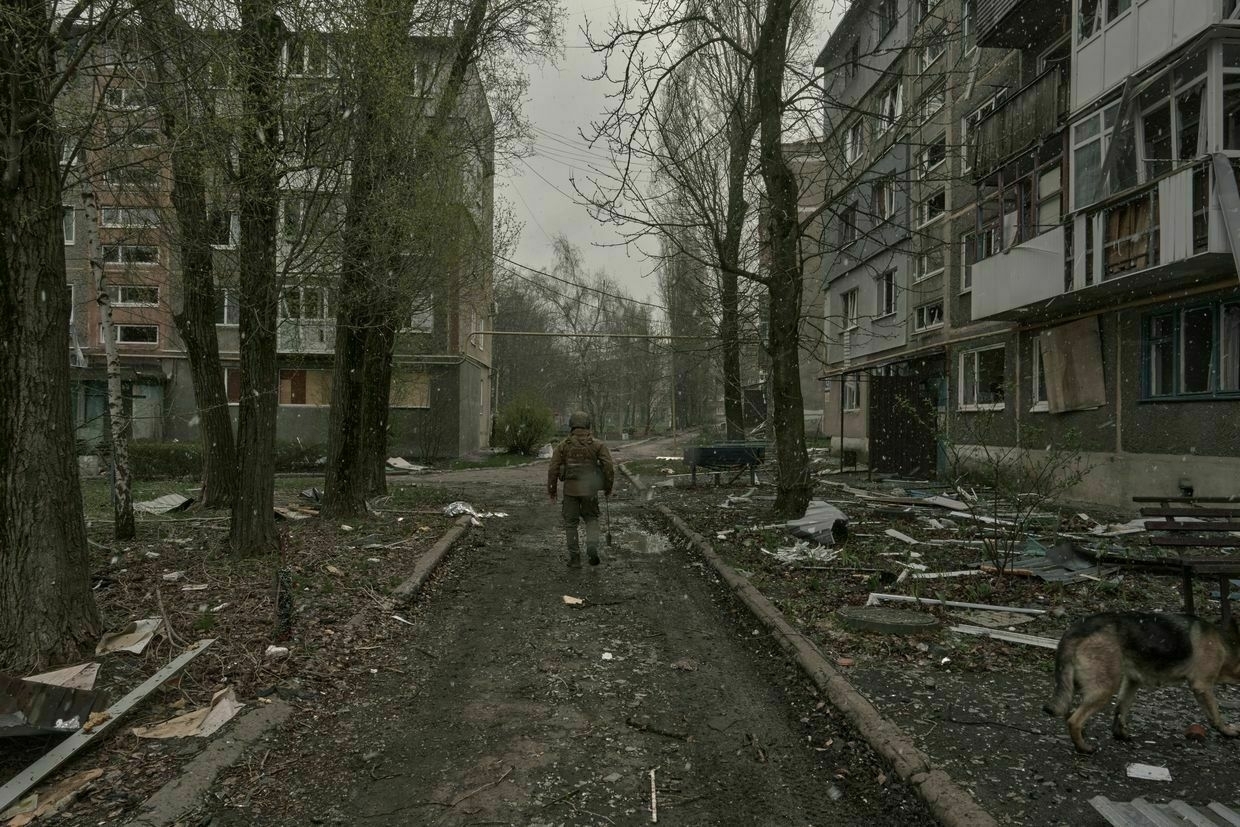
-
Death toll of Russia's June 7 strike on Kharkiv rises to 5
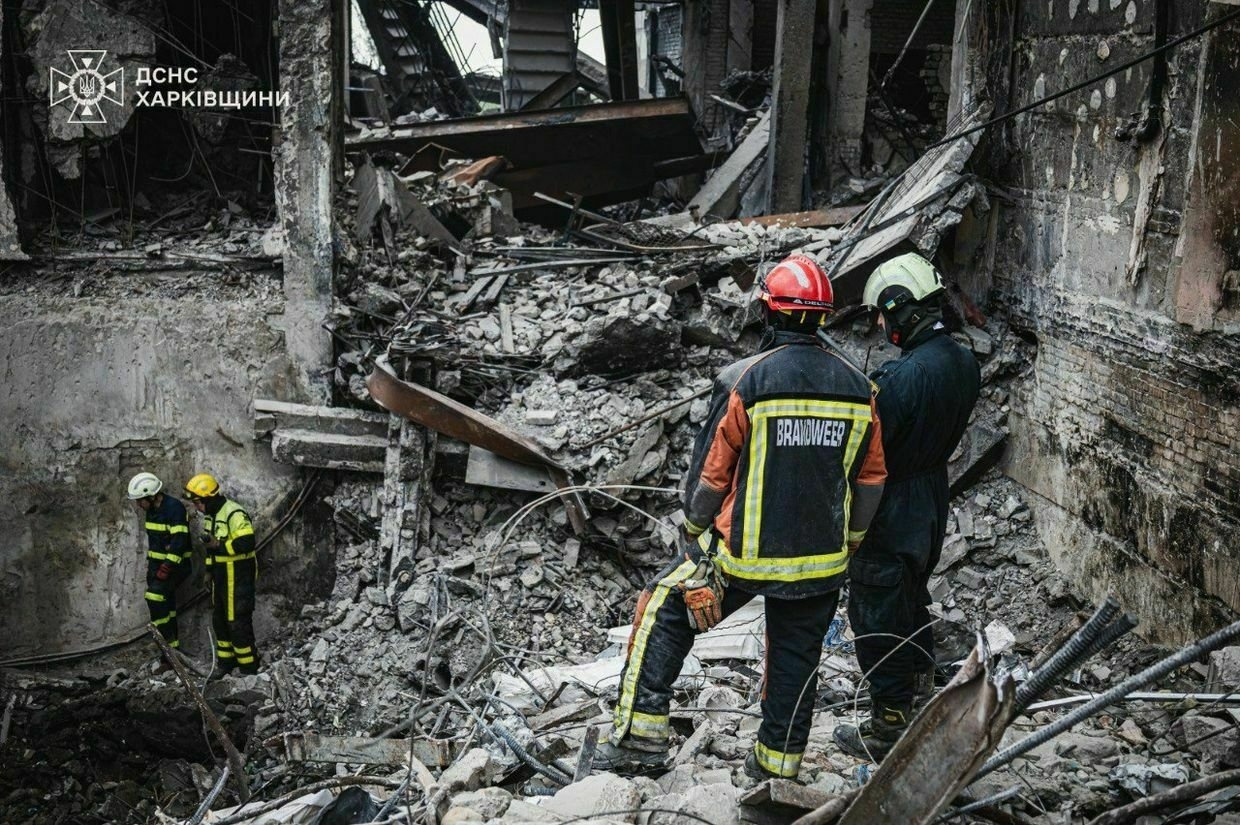
The death toll of a Russian attack on the northeastern city of Kharkiv on June 7 has risen to five, as two more bodies were found in the rubble, Governor Oleh Syniehubov said on June 12.
The State Emergency Service reported the discovery of the fourth victim earlier in the day, adding that search and rescue operations are ongoing as more people may be under the rubble.
Russia attacked Kharkiv with drones, missiles, and KAB bombs overnight on June 7, damaging industrial buildings in the Kyivskyi district, causing structural collapses and large-scale fires. Authorities initially reported three people killed and 19 injured in the attack.
Later the same day, Russia again attacked the city with KAB bombs, killing two more people and injuring 18.
Recent weeks saw Moscow’s forces intensify attacks against Kharkiv, Ukraine’s second-largest city that lies a little over 20 kilometers (around 15 miles) south of the Russian border. A Russian drone attack against the city overnight on June 12 injured at least 15 people, including children.
The strikes take place as Kyiv warns of Russia’s mounting ground assaults along Ukraine’s northeastern border.
‘Juicy target’ — Ukraine says it struck Russian electronics plant in Moscow OblastThe facility assembles circuit boards and electronics for the Russian military-industrial complex, the General Staff of Ukraine’s Armed Forces said.The Kyiv IndependentMartin Fornusek
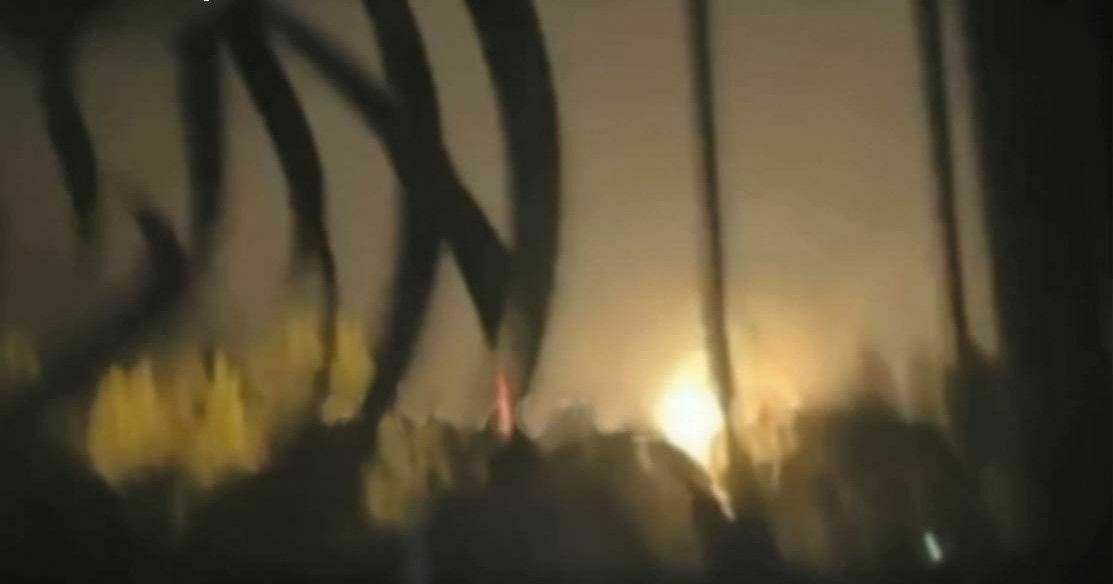
-
Russia using peace talks to stall US sanctions, Zelensky says
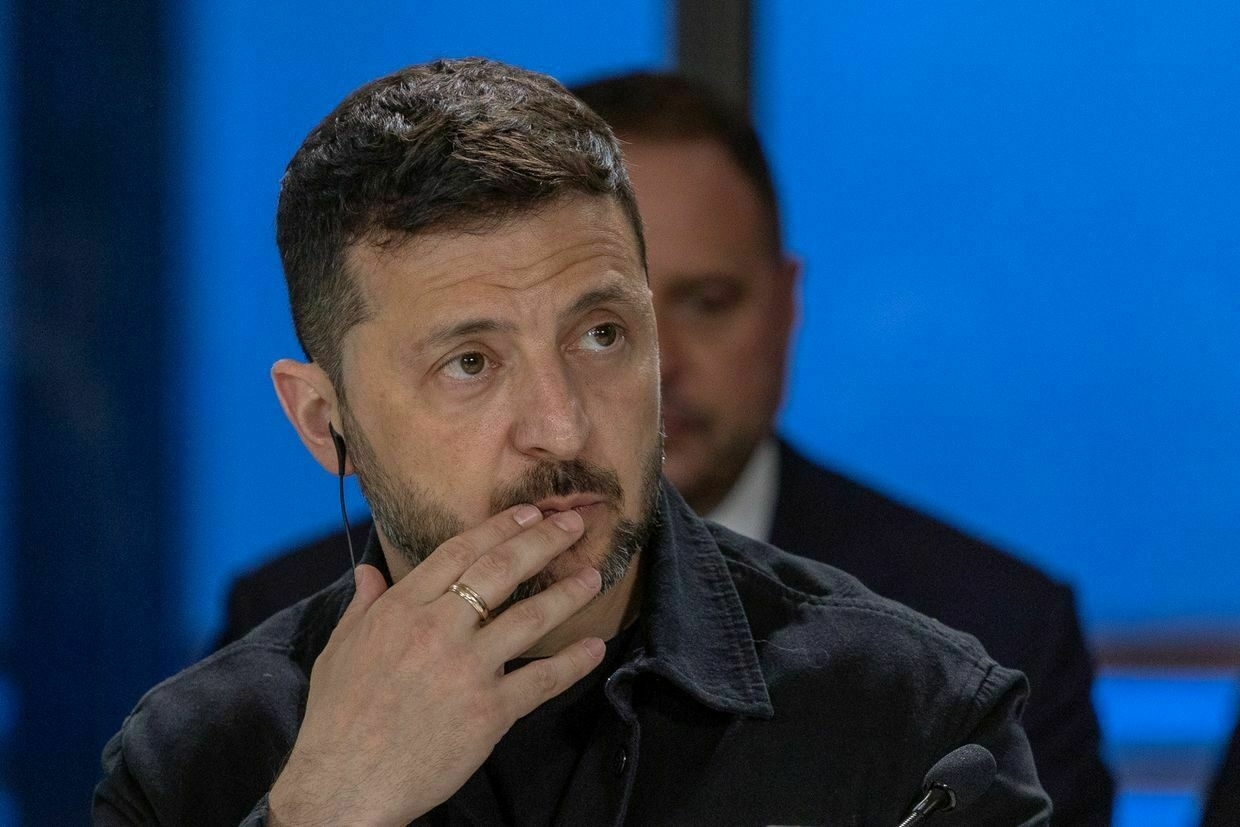
Russia is attempting to delay peace negotiations to avoid tougher U.S. sanctions, President Volodymyr Zelensky said in an interview with German tabloid Bild on June 12.
His comments come as Russia continues to reject a full ceasefire despite having initiated two rounds of peace talks in Istanbul — first on May 16 and on June 2.
Both rounds resulted in agreements on prisoner exchanges, but failed to deliver progress toward ending hostilities. During the negotiations, Moscow ramped up ground offensives and launched massive attacks on Ukrainian cities.
“It’s important for them to show (U.S. President Donald) Trump that there is a diplomatic bridge between Ukraine and Russia,” Zelensky told Bild.
“So that sanctions aren’t imposed against Russia” while talks are ongoing, Zelensky said, adding that Russian President Vladimir Putin’s strategy is to maintain the illusion of dialogue and then argue: “We’re talking to each other! If sanctions are imposed, there will be no more talks."
Zelensky warned that Moscow’s goal is not peace but buying time.
“Putin feels that his economy is now suffering,” he said. “But he wants to gain even more time until the strong sanctions are introduced, because he can still hold out for some time."
Trump has previously warned he would impose new sanctions on Moscow, but has yet to take the step. On June 5, Trump said he was withholding the move in hopes of a potential peace deal but warned he could act if Russia continues to stall.
“When I see the moment where it’s not going to stop… we’ll be very tough,” Trump told reporters.
Critics, as well as Zelensky, argue that the slow implementation of sanctions gave Russia time to adapt its economy and defense sector. “The main mistake of the sanctions was that they were introduced too slowly,” Zelensky said.
Trump has repeatedly said he is monitoring the situation and hinted sanctions could come soon if progress is not made. Meanwhile, a bipartisan bill in the U.S. Senate that would impose harsh tariffs on countries buying Russian oil remains on hold as lawmakers await Trump’s signal.
‘Deadline is in my brain’ — Trump dismisses timeline to impose Russian sanctionsU.S. President Donald Trump sidestepped questions on June 5 as to when he can be expected to impose additional sanctions on Russia, as the Kremlin continues to reject a ceasefire in Ukraine.The Kyiv IndependentDmytro Basmat
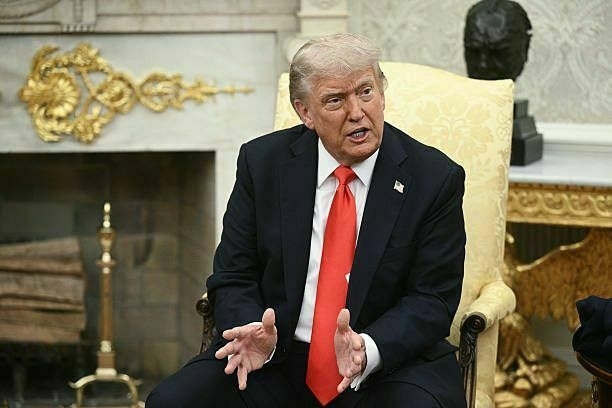
-
Russia killed at least 3, injured 37 across Ukraine over past day
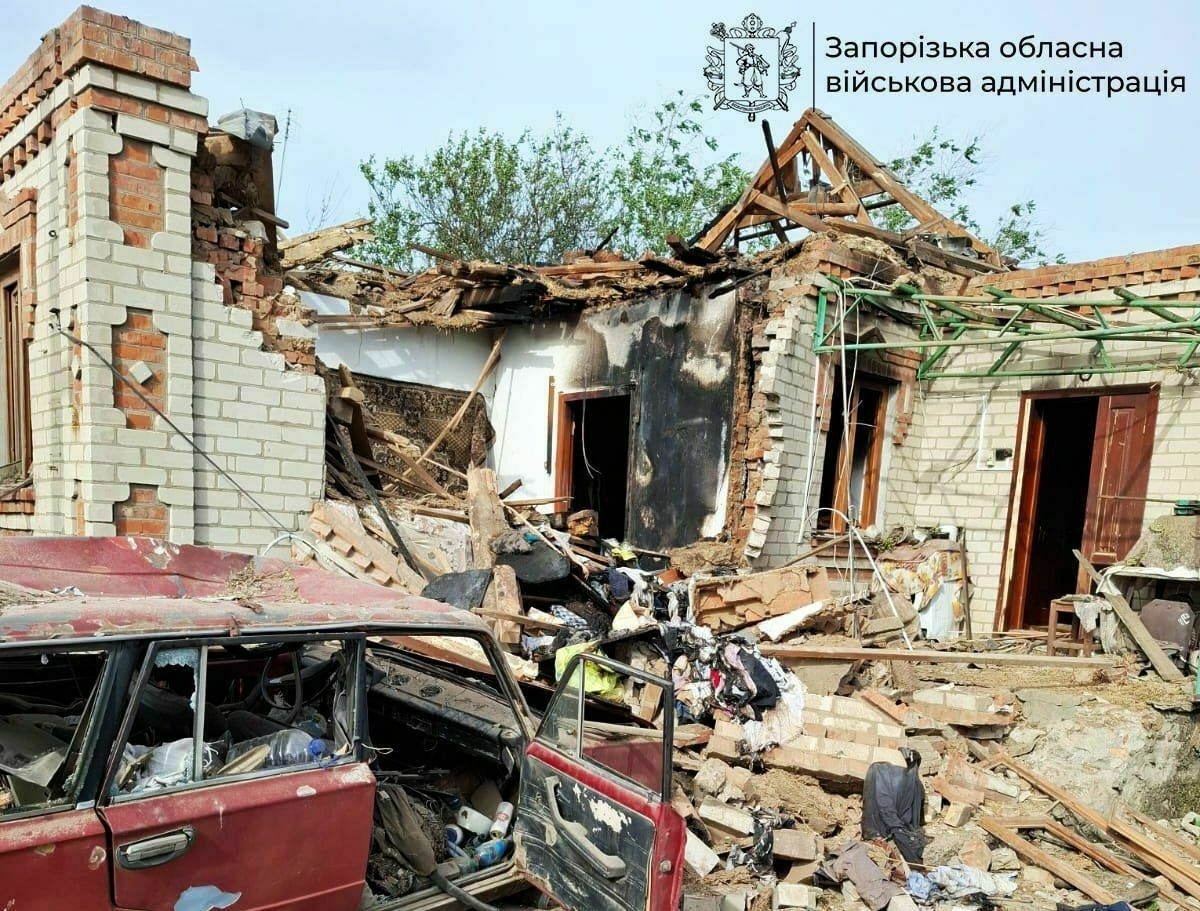
At least three civilians were killed and 37 injured across Ukraine in Russian attacks over the past day, regional authorities reported on June 12.
According to the Ukrainian Air Force, Russian forces launched 63 drones, including Shaheds and other unmanned aerial systems, from multiple directions, including Kursk, Orel, Millerovo, and occupied Crimea.
The Ukrainian air defense reportedly shot down 28 drones, while 21 were intercepted by electronic warfare or disappeared from radars.
In Kharkiv Oblast, 16 people, including four children, were injured in attacks on the city of Kharkiv and surrounding communities, Governor Oleh Syniehubov said. The region was hit by various types of drones, missiles, and glide bombs, damaging residential buildings, schools, and other civilian infrastructure sites.
In Donetsk Oblast, two civilians were killed and six others injured in Russian strikes on Raiske and Toretsk, according to Governor Vadym Filashkin.
In Sumy Oblast, one person was injured when a Russian first-person-view (FPV) drone struck his car in the Sumy district, the regional administration said. More than 100 attacks were recorded across 37 settlements, damaging houses and prompting the evacuation of 80 residents from border communities.
In Zaporizhzhia Oblast, two people were injured in Malokaterynivka during a wave of nearly 500 attacks on 16 towns and villages, Governor Ivan Fedorov said. Russian forces reportedly used drones, air strikes, artillery, and multiple-launch rocket systems (MLRS) to target civilian areas.
In Kherson Oblast, 12 people, including one child, were injured, and one person in the village of Sadove was killed in an artillery strike, Governor Oleksandr Prokudin said. Russian forces attacked dozens of towns and villages, damaging residential buildings, infrastructure, and a national park.
Zelensky urges US to act on Ukraine’s request to buy air defenses after deadly Kharkiv bombing“These Russian strikes are not ‘retaliation’ but acts of destruction,” the president said as Russia attacked the city of Kharkiv with KAB guided bombs the evening of June 7, killing at least two people.The Kyiv IndependentOlena Goncharova
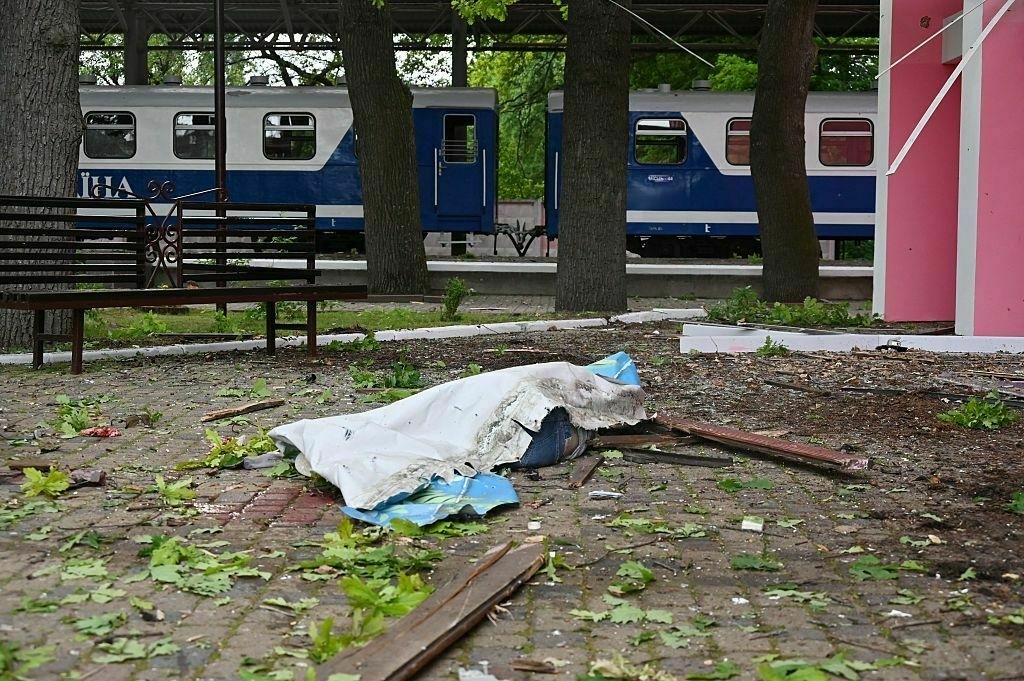
-
Ukraine strikes Russian electronics plant in Moscow Oblast, military says
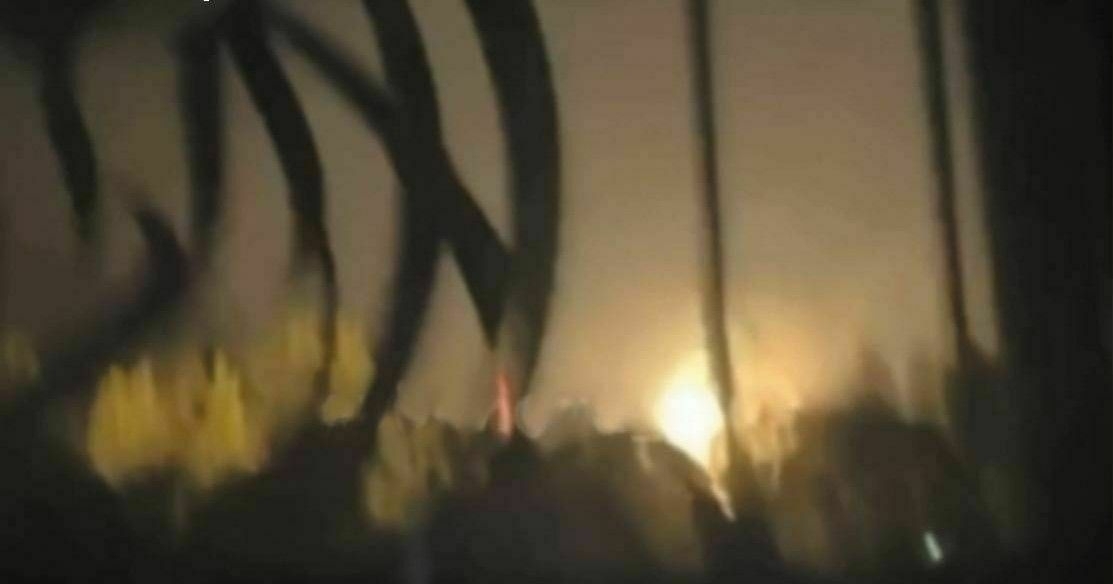
Editor’s note: The story is being updated.
Ukraine’s Unmanned Systems Forces attacked the Rezonit Technopark in Russia’s Moscow Oblast overnight on June 12, with explosions reported at the facility, the Ukrainian military reported.
The operation was meant to “reduce Russia’s ability to produce high-tech weapons and equipment,” as the facility assembles circuit boards and electronics for the Russian military-industrial complex, the General Staff of Ukraine’s Armed Forces said.
The consequences of the attack are being clarified, according to the statement.
Russia’s Defense Ministry claimed its forces shot down 52 Ukrainian drones overnight, including three over Moscow Oblast. Russian officials have not commented on a possible attack against the technopark.
-
With only 2 weeks of funding left, US group tracking Russian abduction of Ukrainian children prepares to shut down
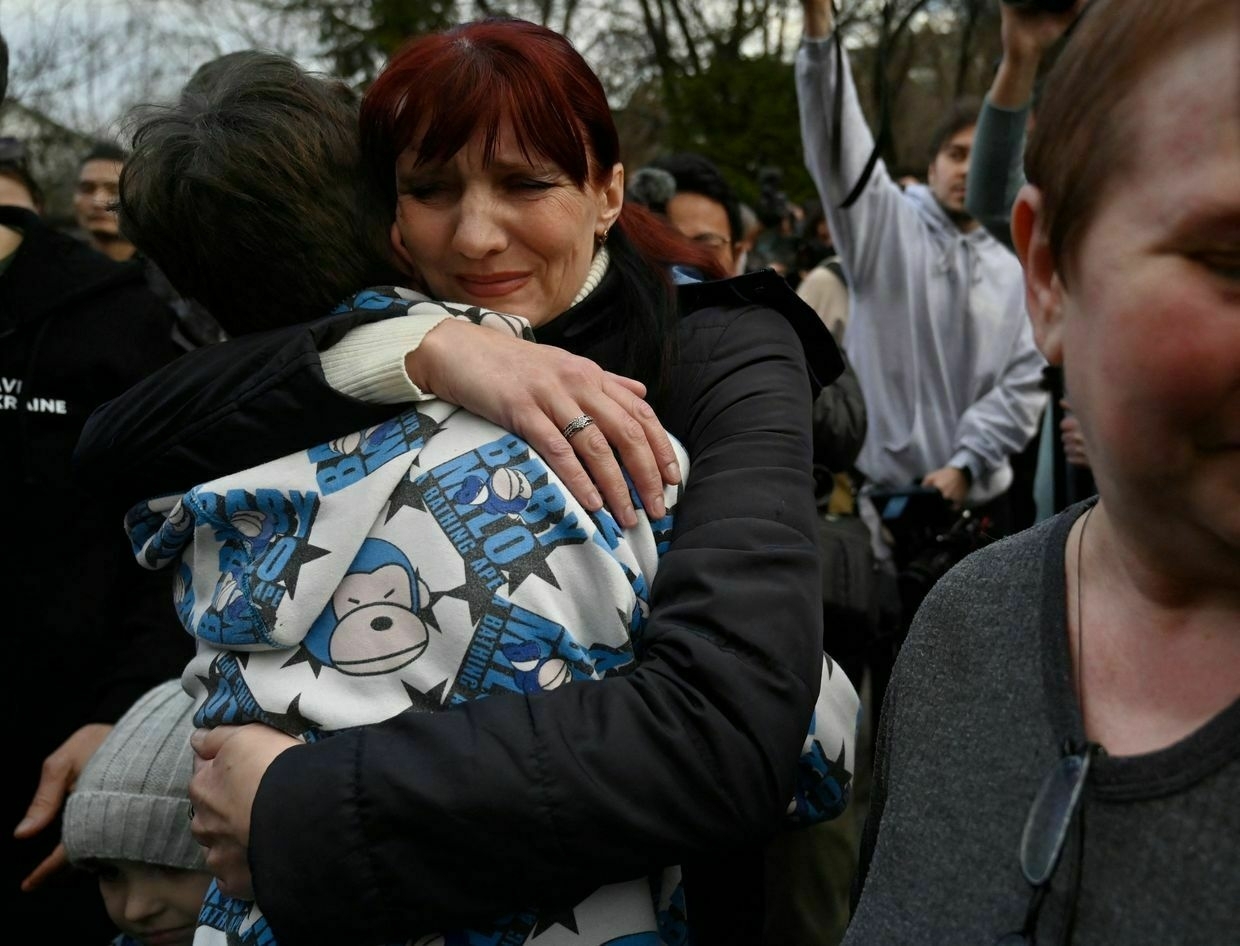
The leading U.S.-backed initiative documenting Russia’s abduction of Ukrainian children is preparing to shut down after its funding was terminated by the Trump administration, CNN reported on June 11.
The Yale University-based Humanitarian Research Lab, which spearheads the Ukraine Conflict Observatory, has reportedly transferred its data to the U.S. State Department and Ukraine’s government as it closes operations in the coming weeks.
“Right now, we are running on fumes,” Nathaniel Raymond, the lab’s executive director, told CNN. “As of July 1, we lay off all of our staff across Ukraine and other teams, and our work tracking the kids officially ends."
Since its launch in May 2022, the observatory has compiled evidence of Russian war crimes, including the deportation of Ukrainian children, many of whom were sent to reeducation camps or adopted by Russian families. The project relied on biometric and satellite data and has supported six International Criminal Court (ICC) indictments, including two related to child abductions, according to Raymond.
The database of the observatory contains records on more than 30,000 Ukrainian children allegedly abducted by Russia from over 100 locations, according to an undisclosed source cited by CNN. This figure outstrips estimates by Ukraine’s Children of War database, which says that over 19,500 children have been deported or forcibly displaced by Russia.
The program’s end leaves what experts call a major gap in accountability efforts.
“The Conflict Observatory’s work cannot be replaced by Europol or other organizations,” a bipartisan group of U.S. lawmakers reportedly wrote in a letter to Secretary of State Marco Rubio on June 11, urging the administration to restore funding.
While Rubio temporarily reinstated funding earlier this year to allow the lab to complete data transfers, he confirmed at a March 28 press conference that the program was ultimately defunded as part of government efficiency cuts. The transferred material, including documentation of attacks on civilian infrastructure and filtration sites, is now expected to be shared with Europol within days.
According to Ukraine’s Children of War database, only around 1,300 of the abducted children have been brought home so far. Many others remain unidentified due to deliberate efforts by Russian authorities to obscure their identities by altering names and birth records.
Ukrainian leaders have repeatedly emphasized that repatriating abducted children is a non-negotiable condition for any future peace deal with Moscow.
In 2023, the ICC issued arrest warrants for Russian President Vladimir Putin and children’s rights ombudsman Maria Lvova-Belova over their roles in the deportation of Ukrainian minors.
As Russia trains abducted children for war, Ukraine fights uphill battle to bring them homeAround the world, abducting a child is a serious crime punishable by years behind bars. But when the kidnapper is Russia, justice remains a distant hope. So does the child’s return home. Since the start of the full-scale invasion, Ukraine has identified over 19,500 children who have beenThe Kyiv IndependentDaria Shulzhenko
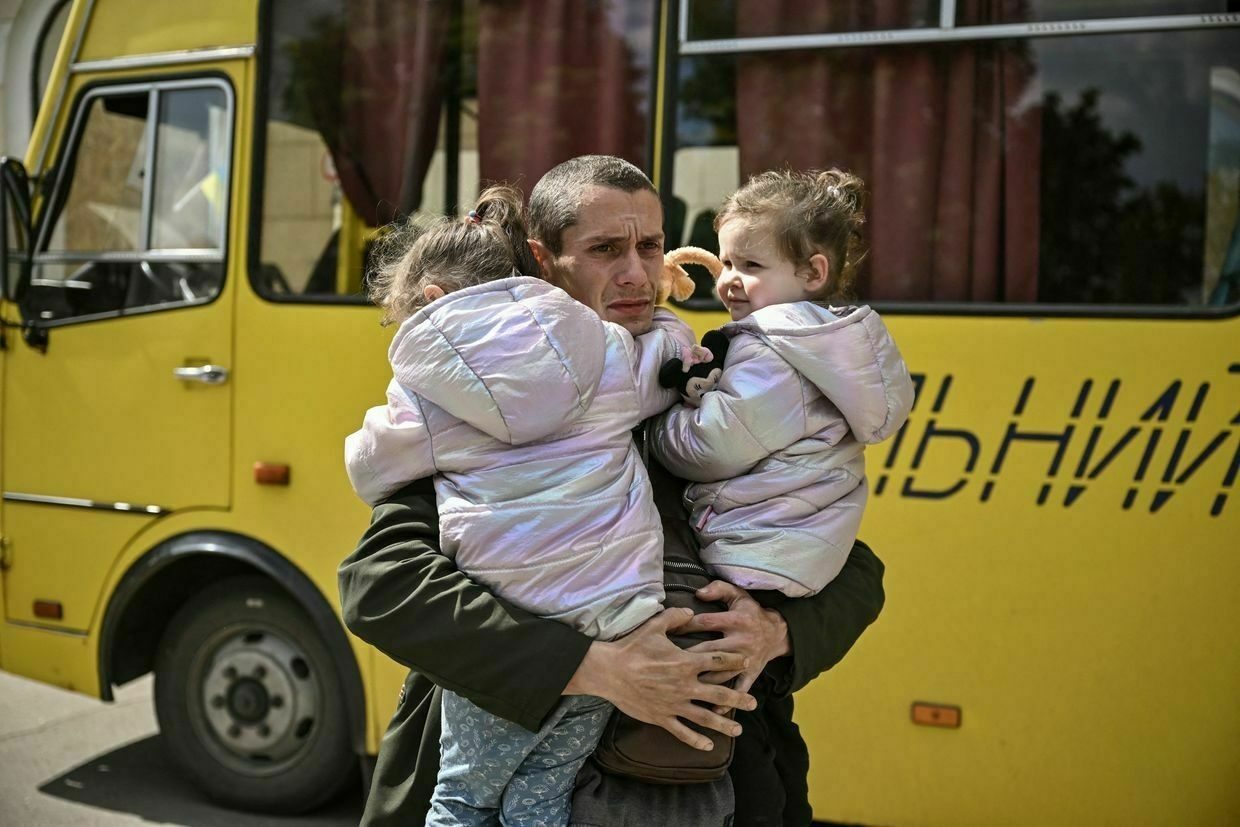
-
German Defense Minister Pistorius arrives in Ukraine to discuss military aid
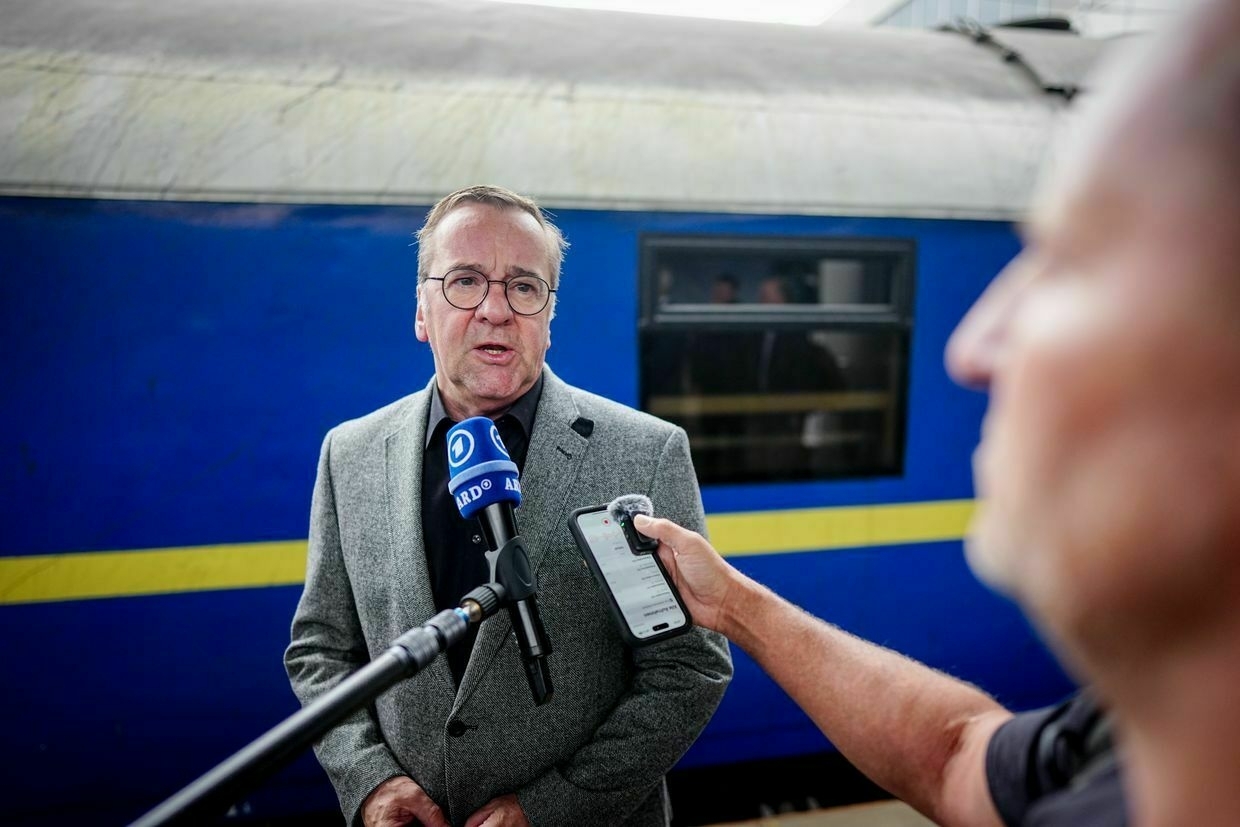
Editor’s note: This is a developing story and is being updated.
German Defense Minister Boris Pistorius arrived in Kyiv on June 12 to meet Ukrainian leaders and discuss future defense support, DPA news agency reported.
The visit marks Pistorius’s first official trip to Ukraine as a minister in Chancellor Friedrich Merz’s new German government.
During former Chancellor Olaf Scholz’s tenure, Pistorius made several visits to the war-torn country and played a key role in establishing Germany as Ukraine’s top European military donor.